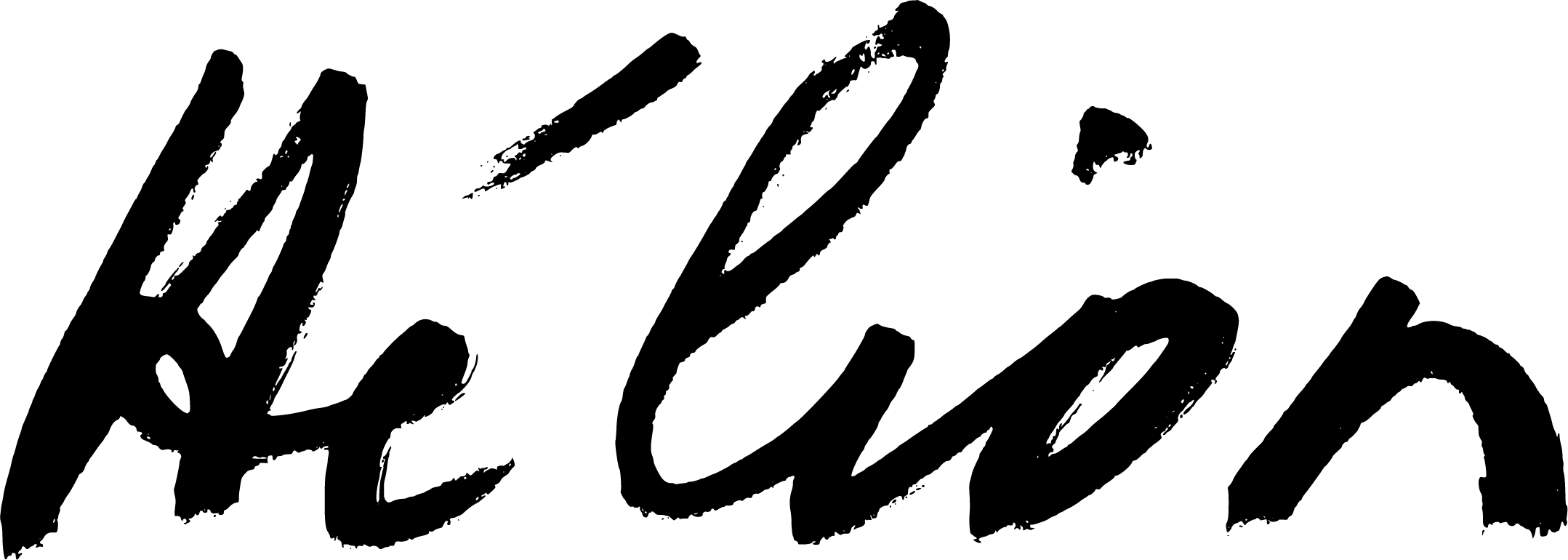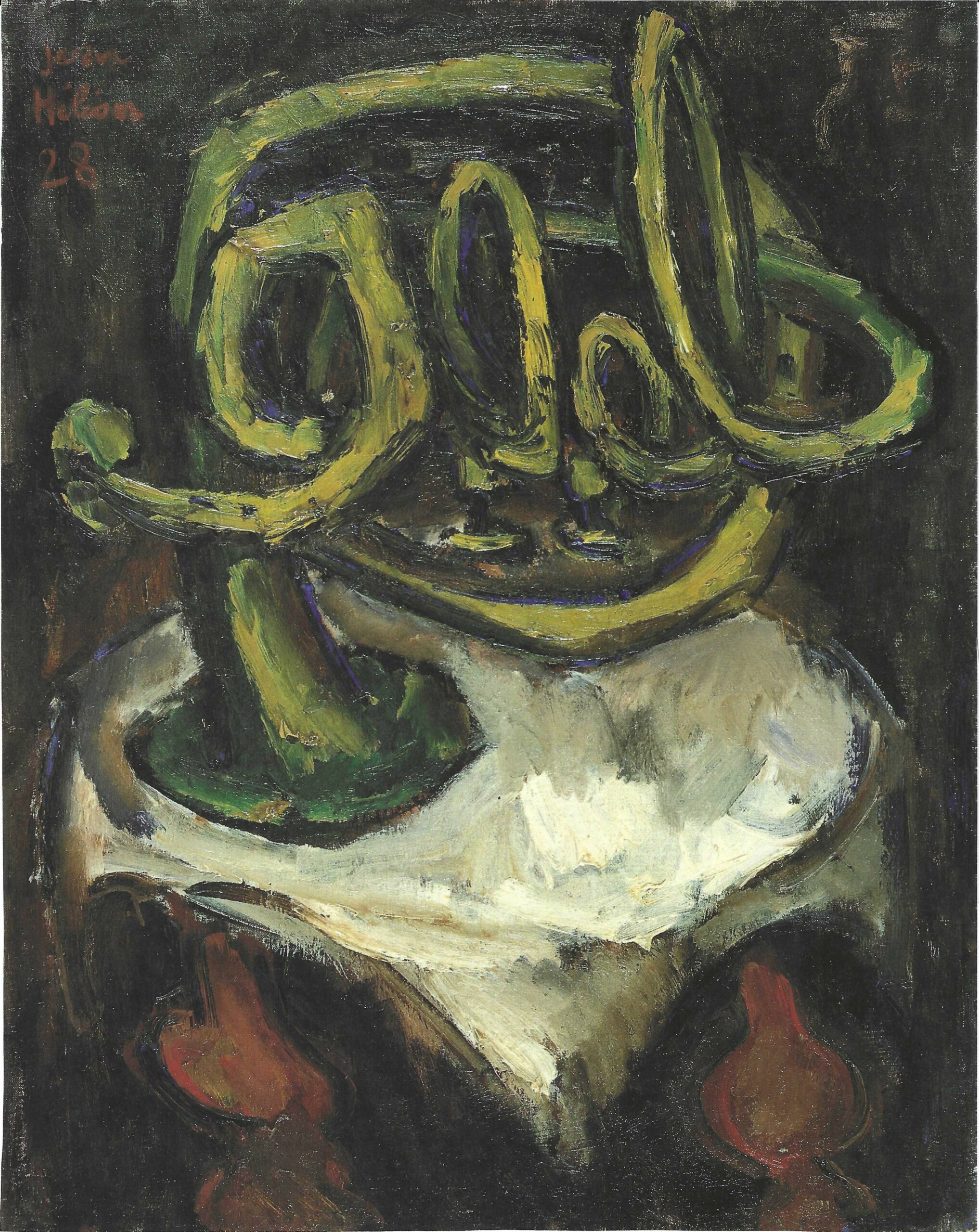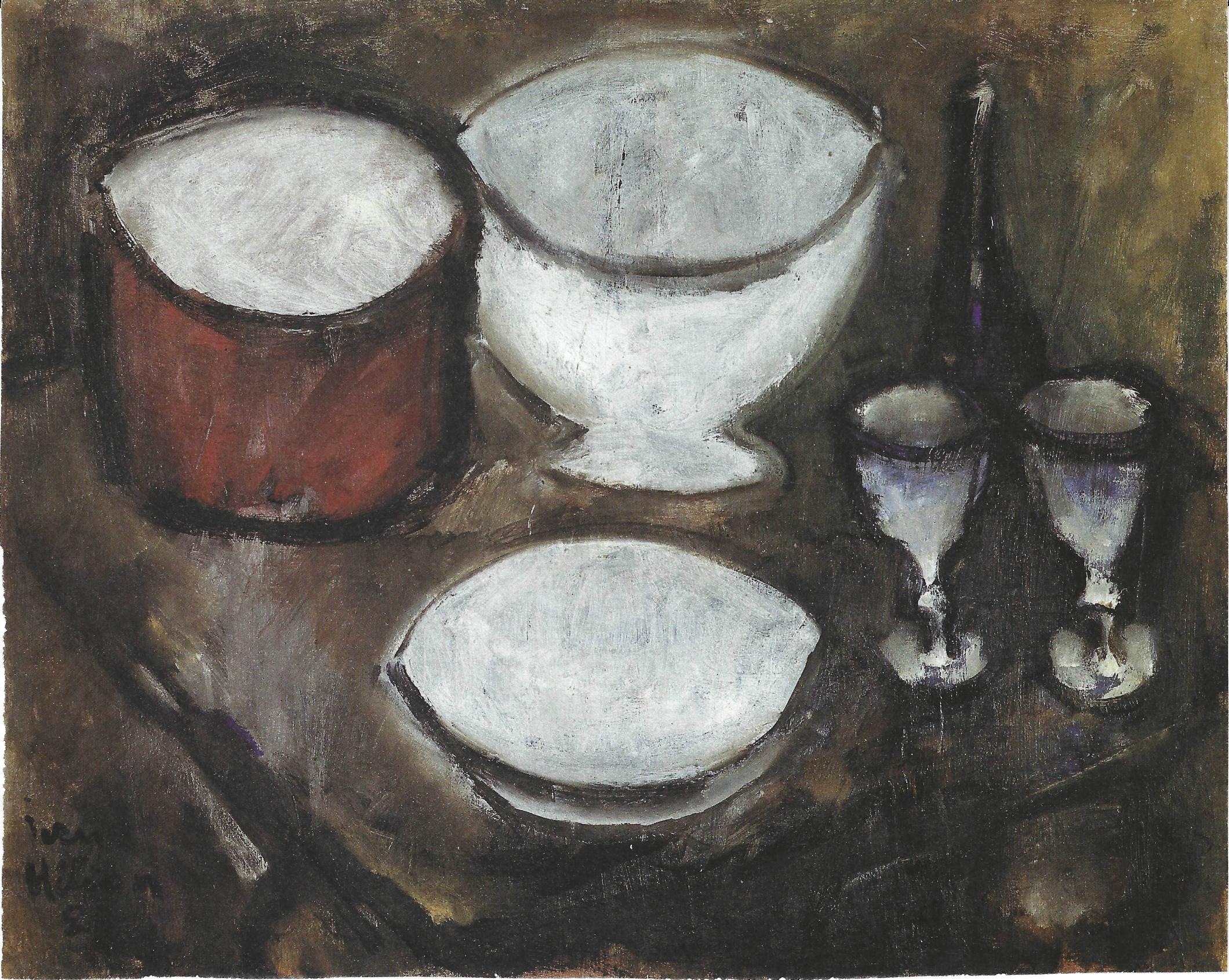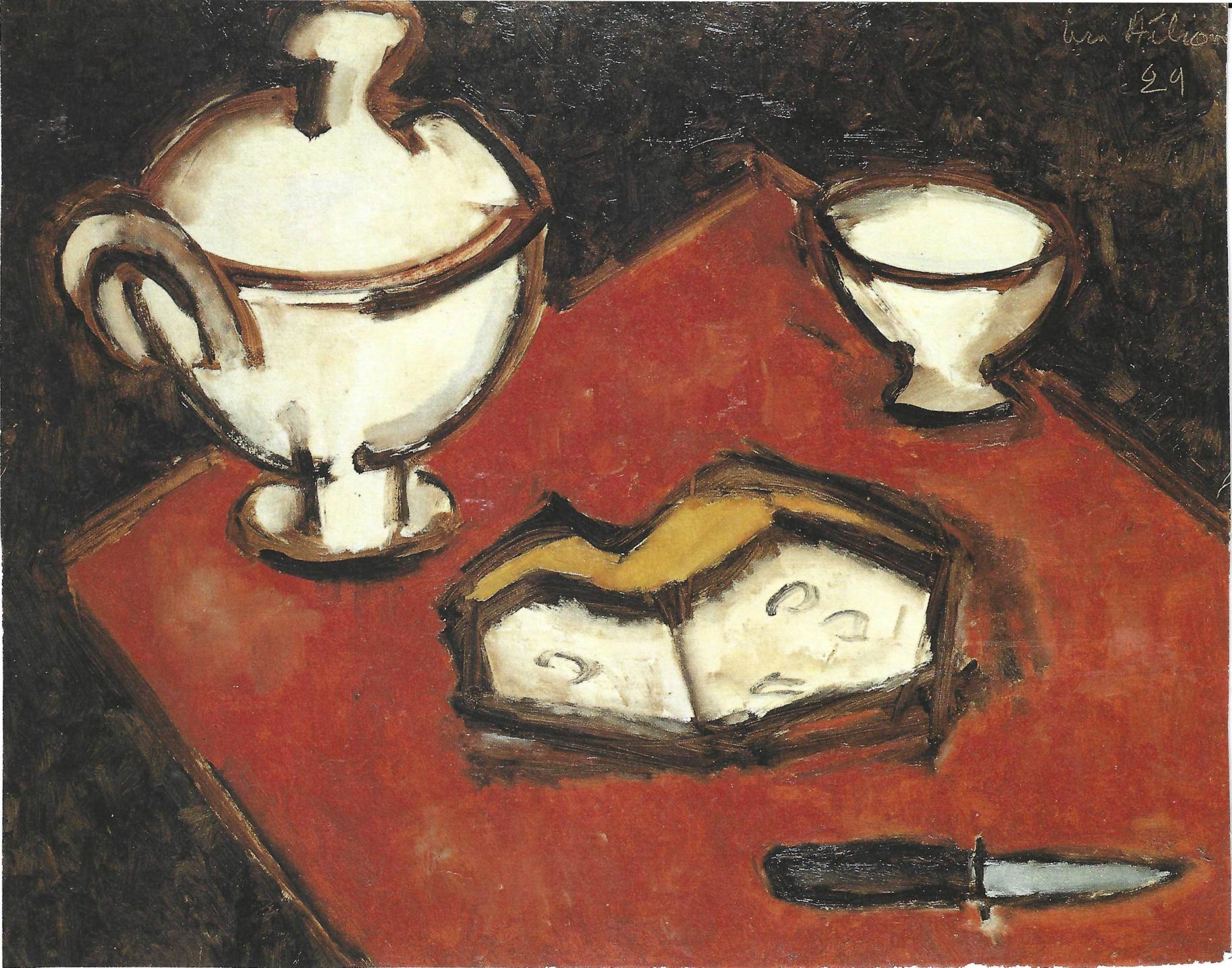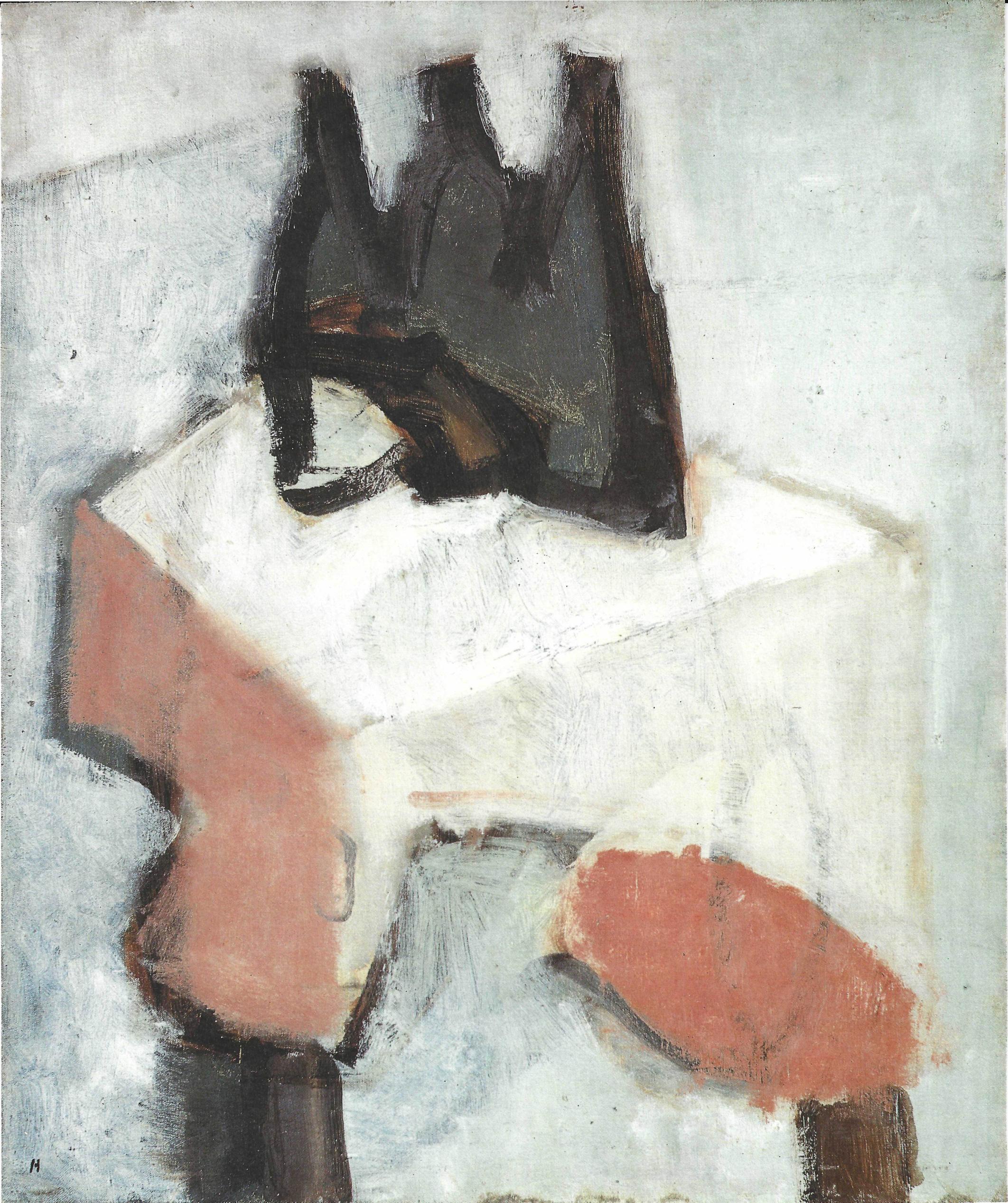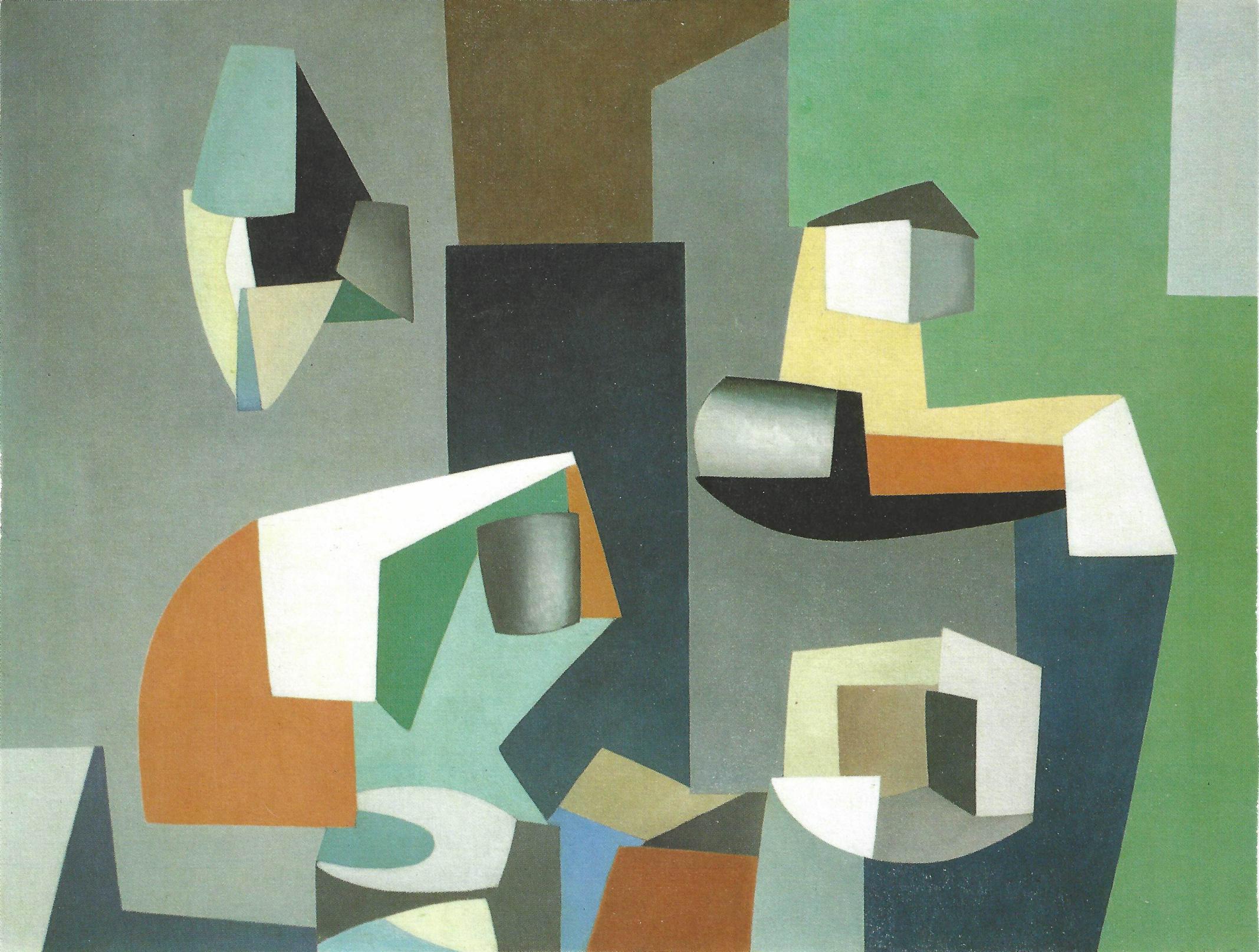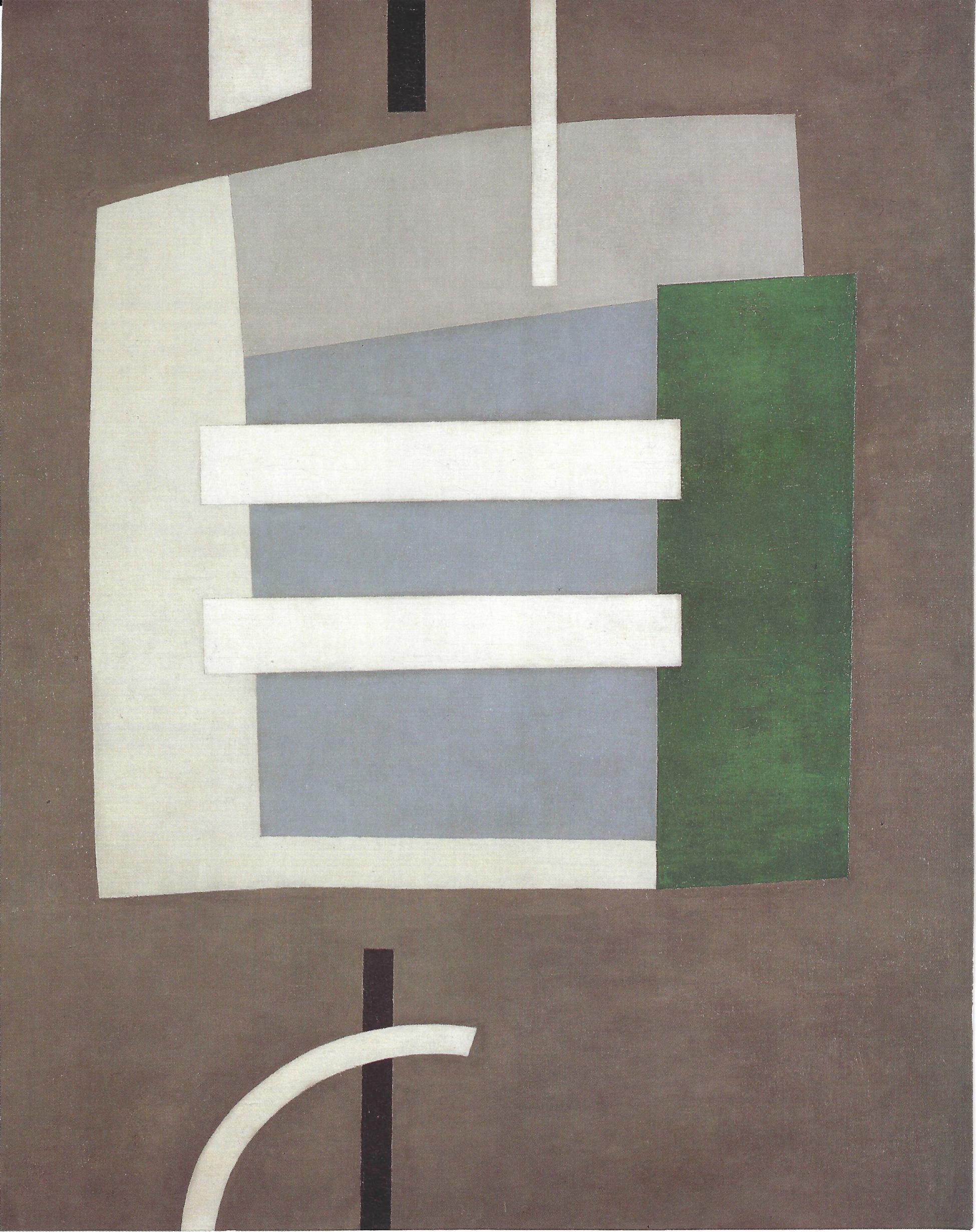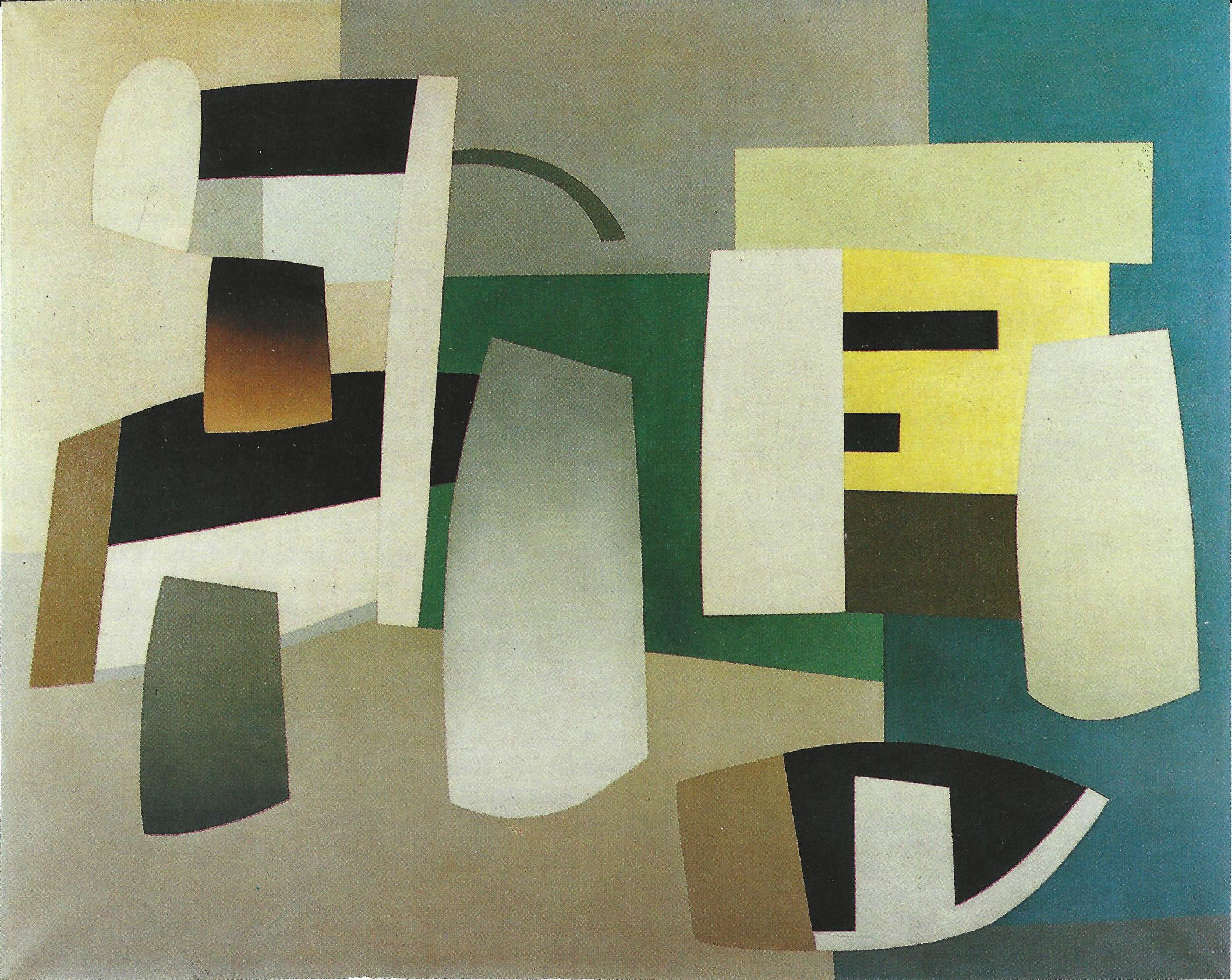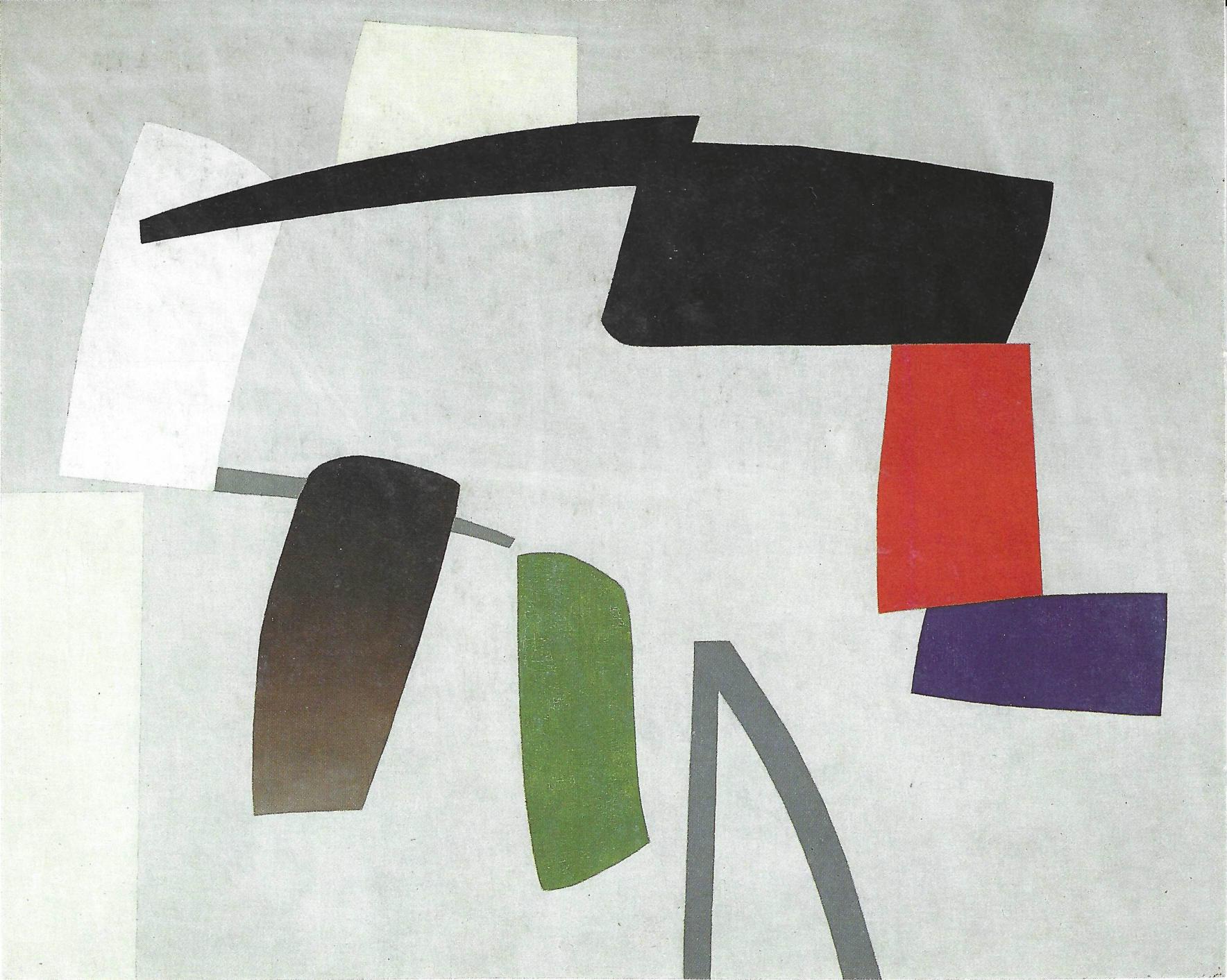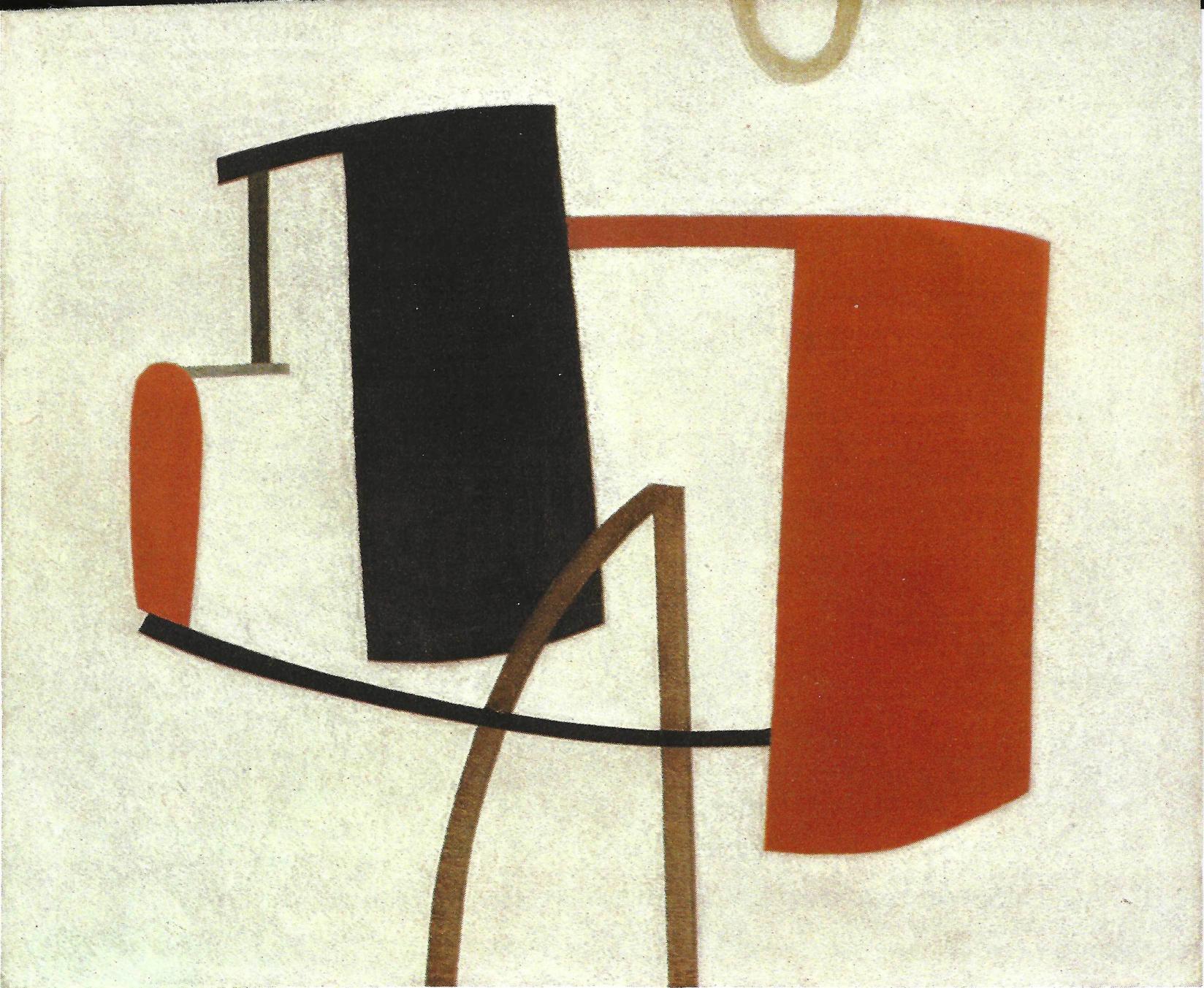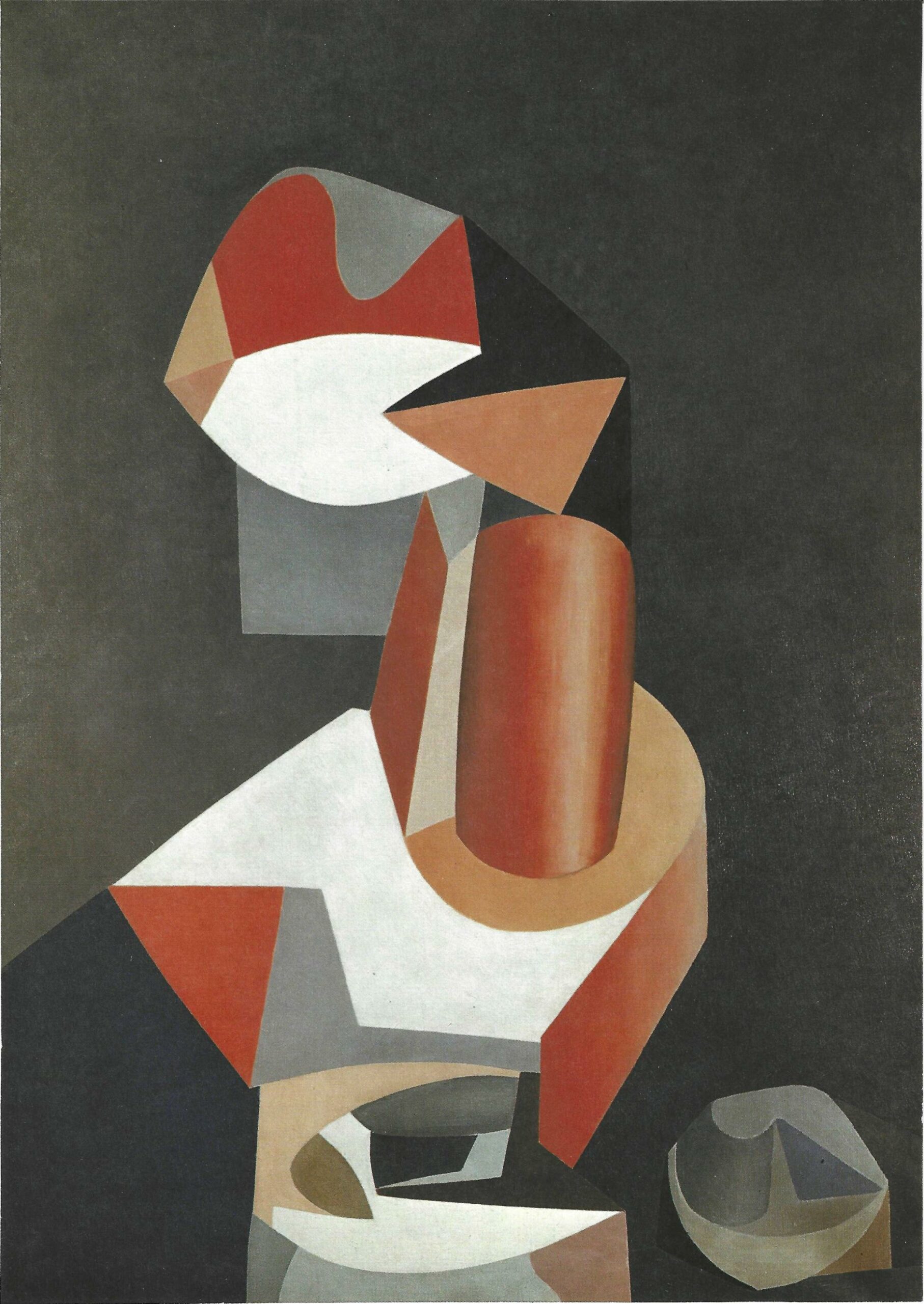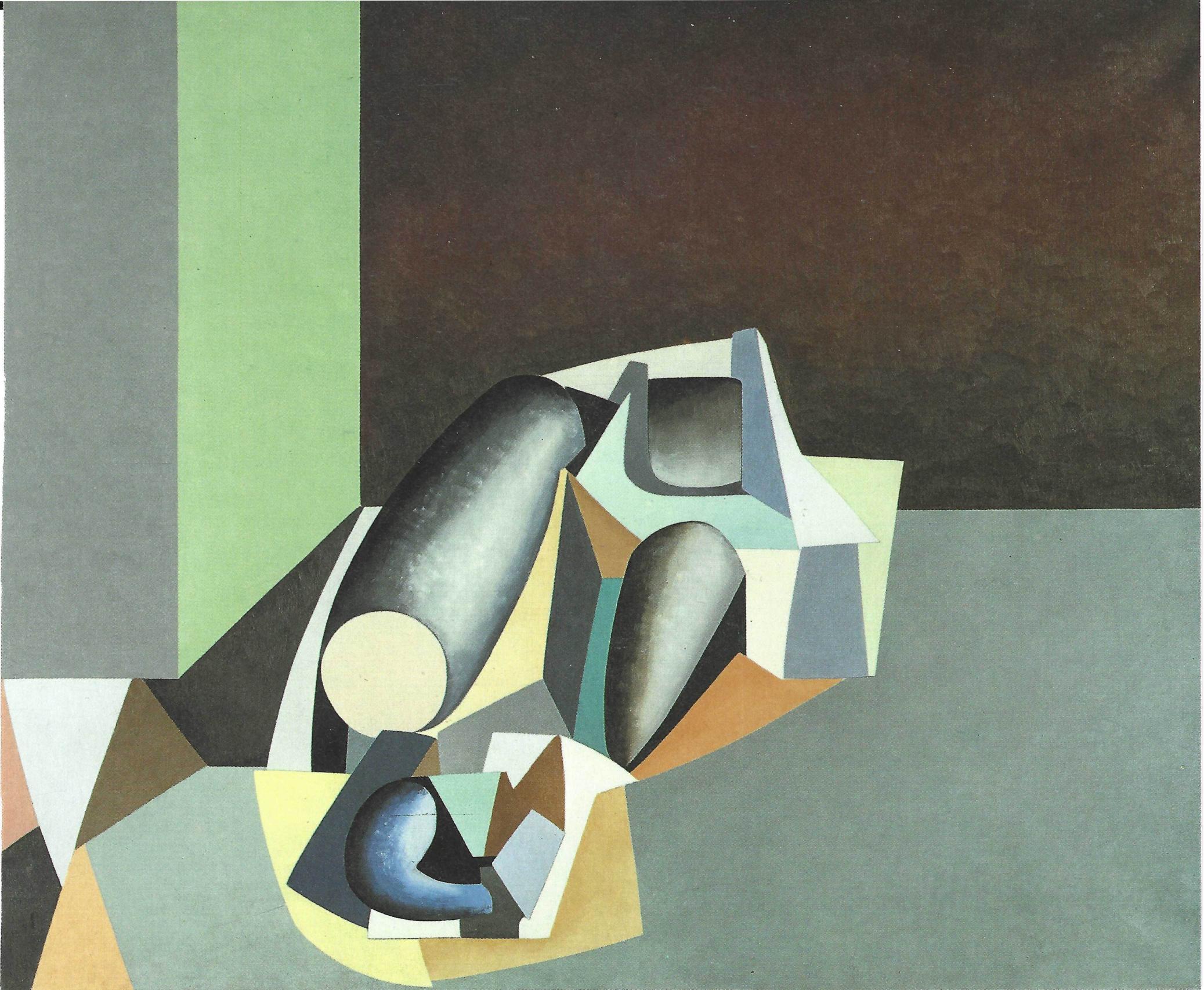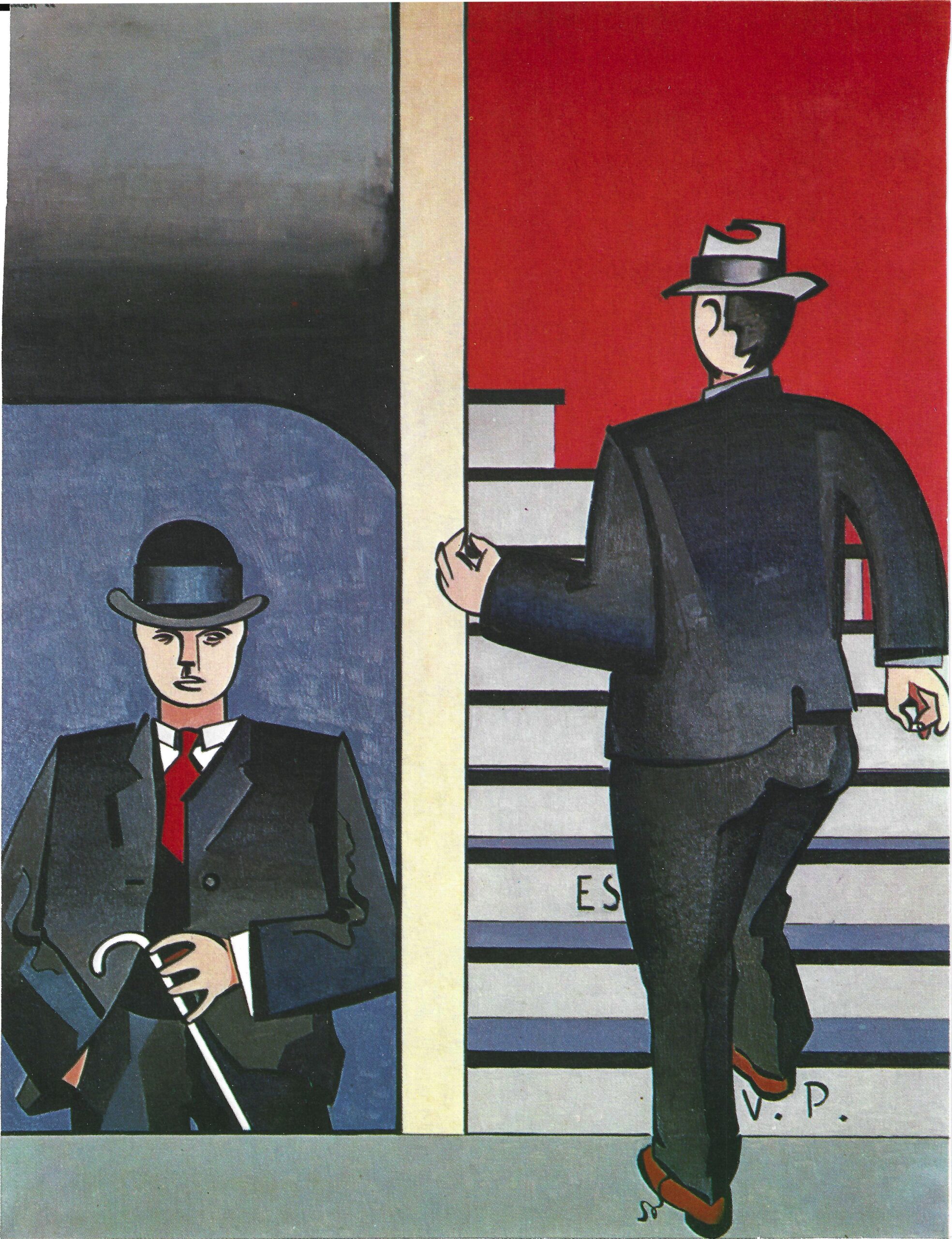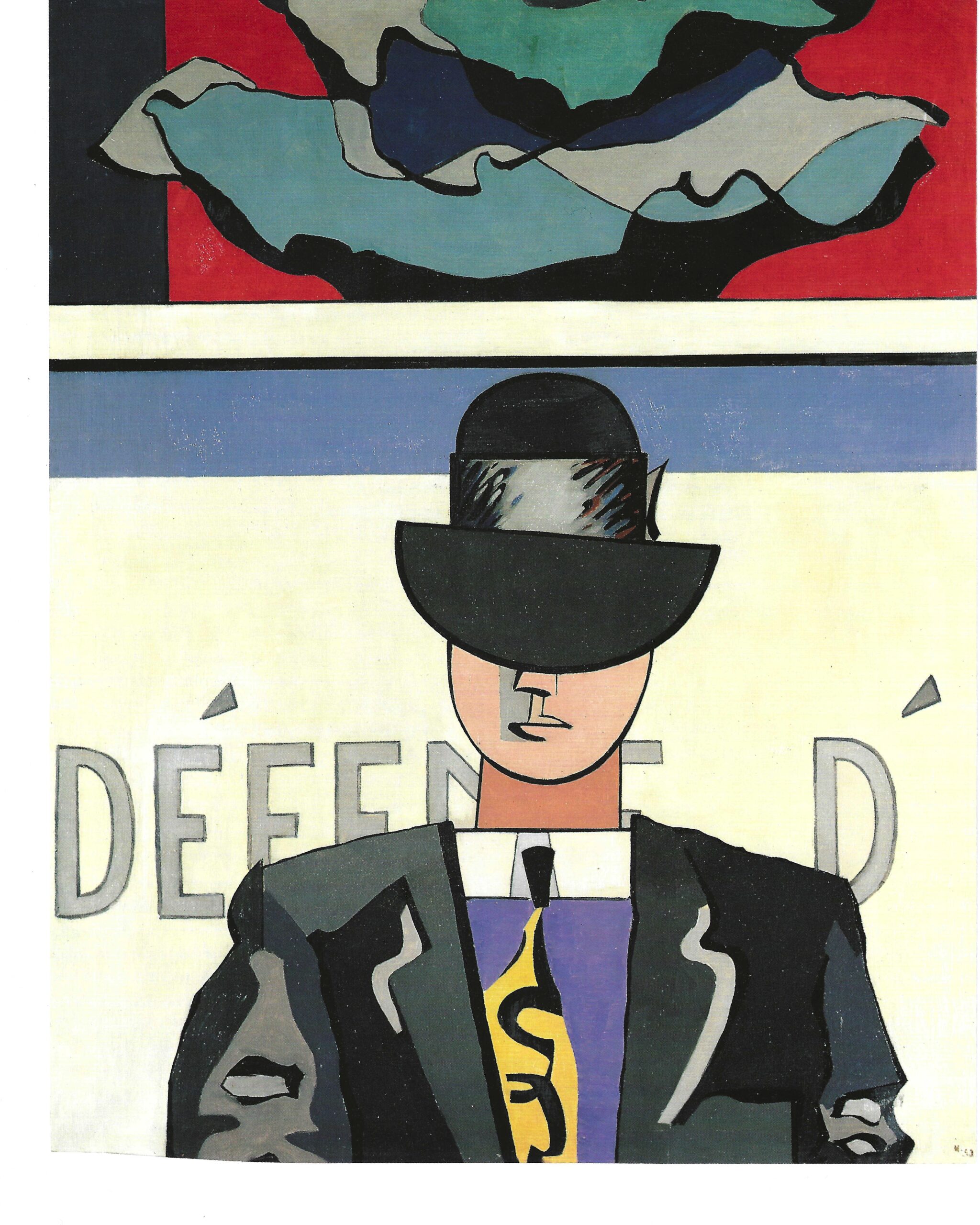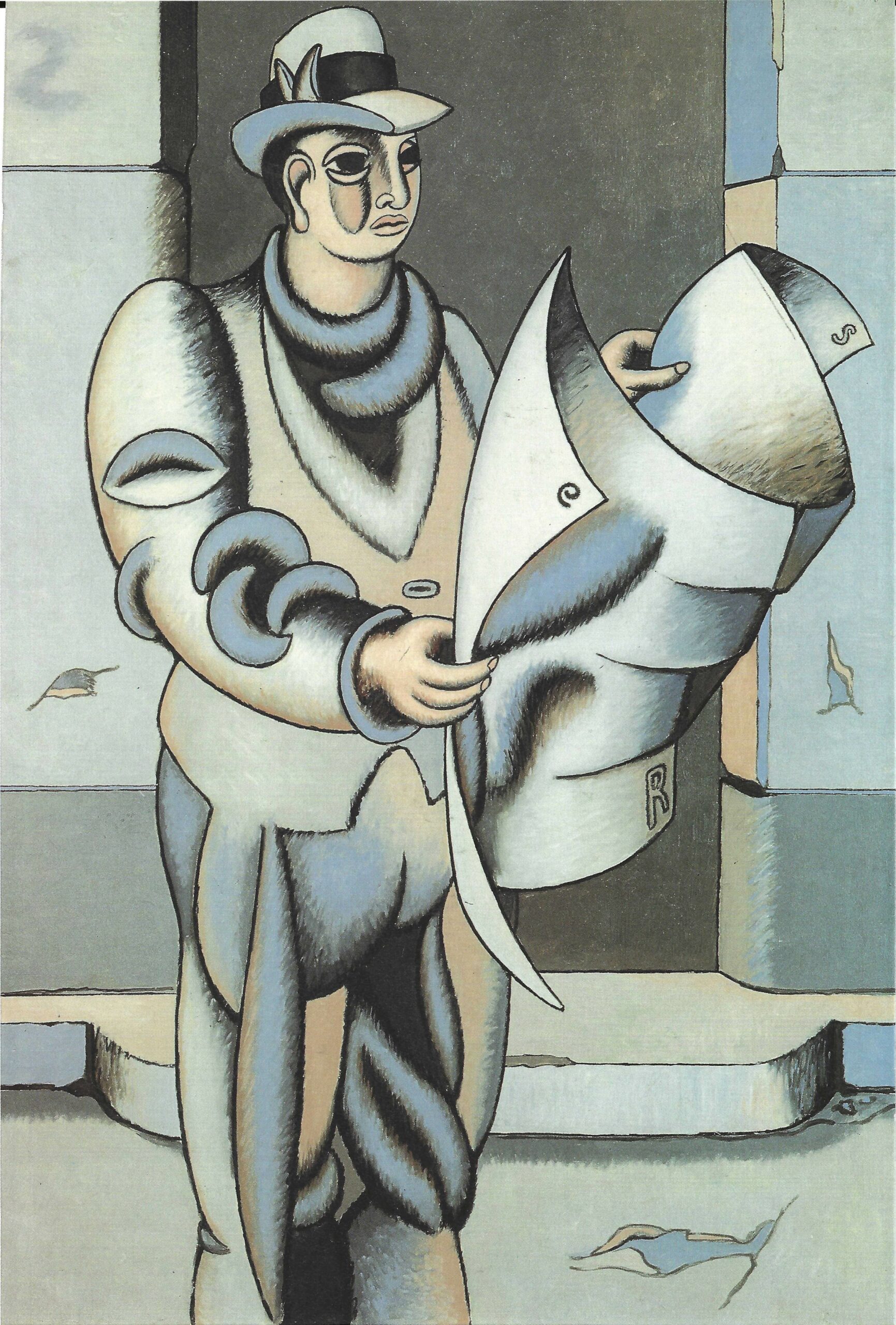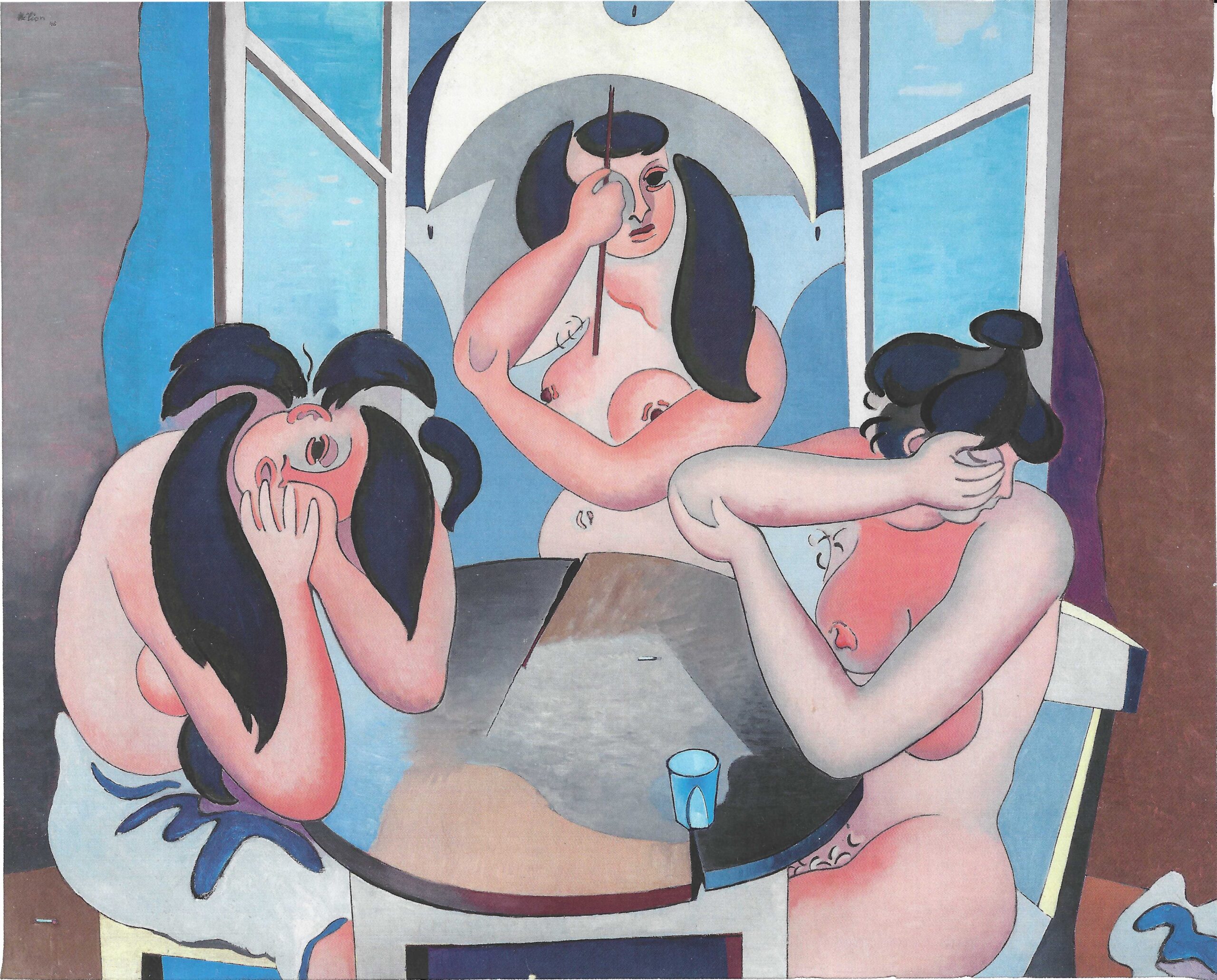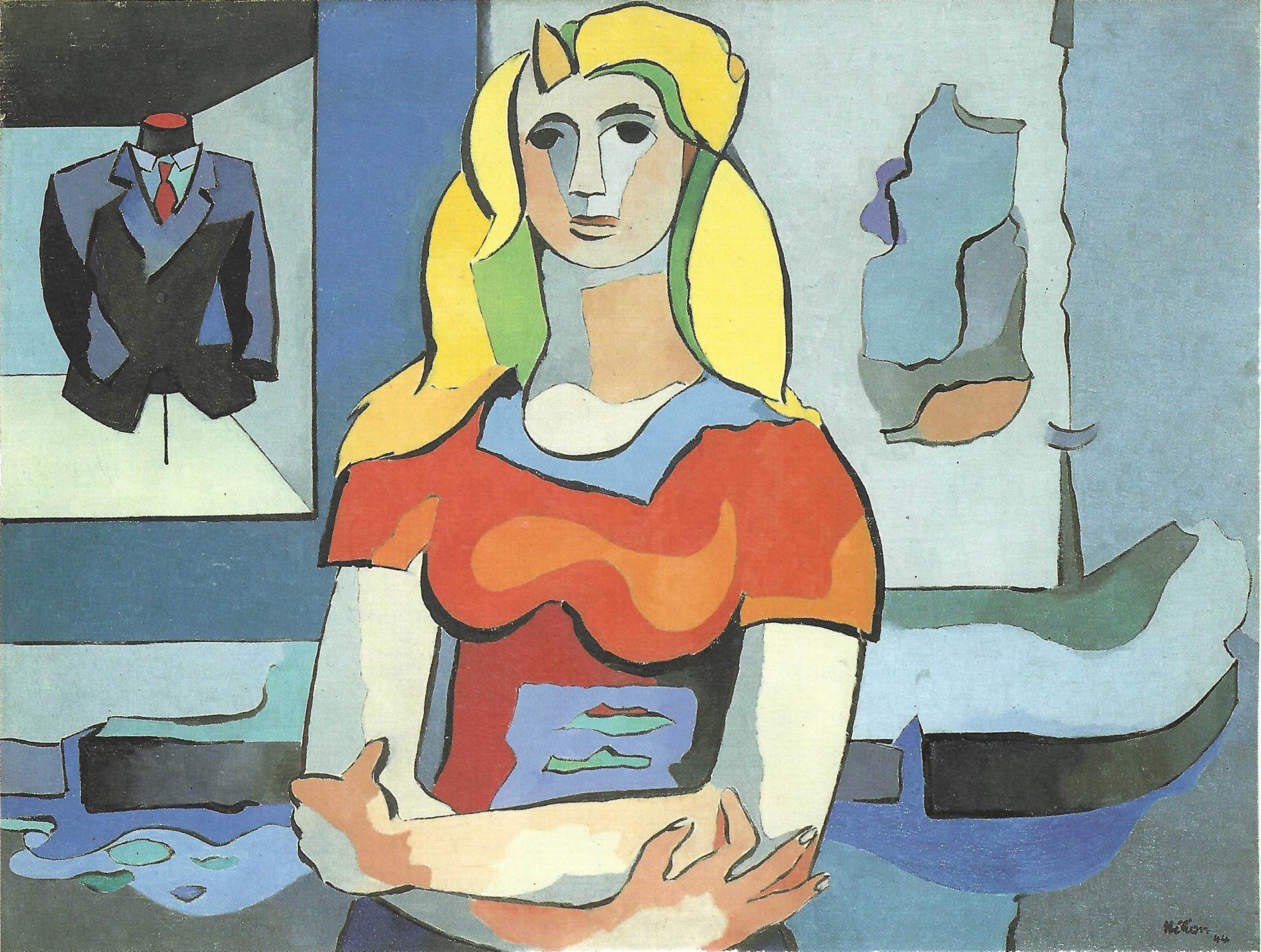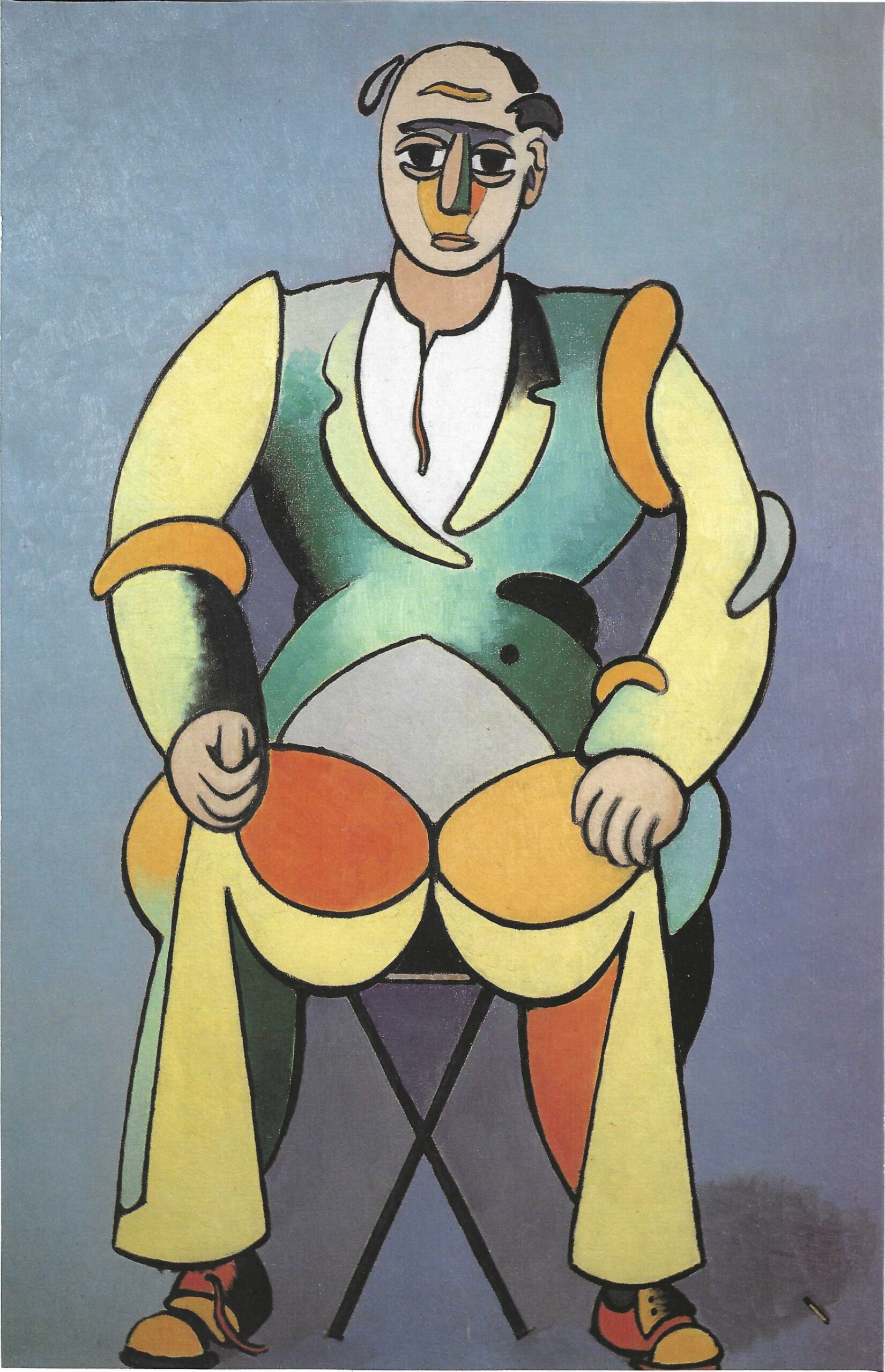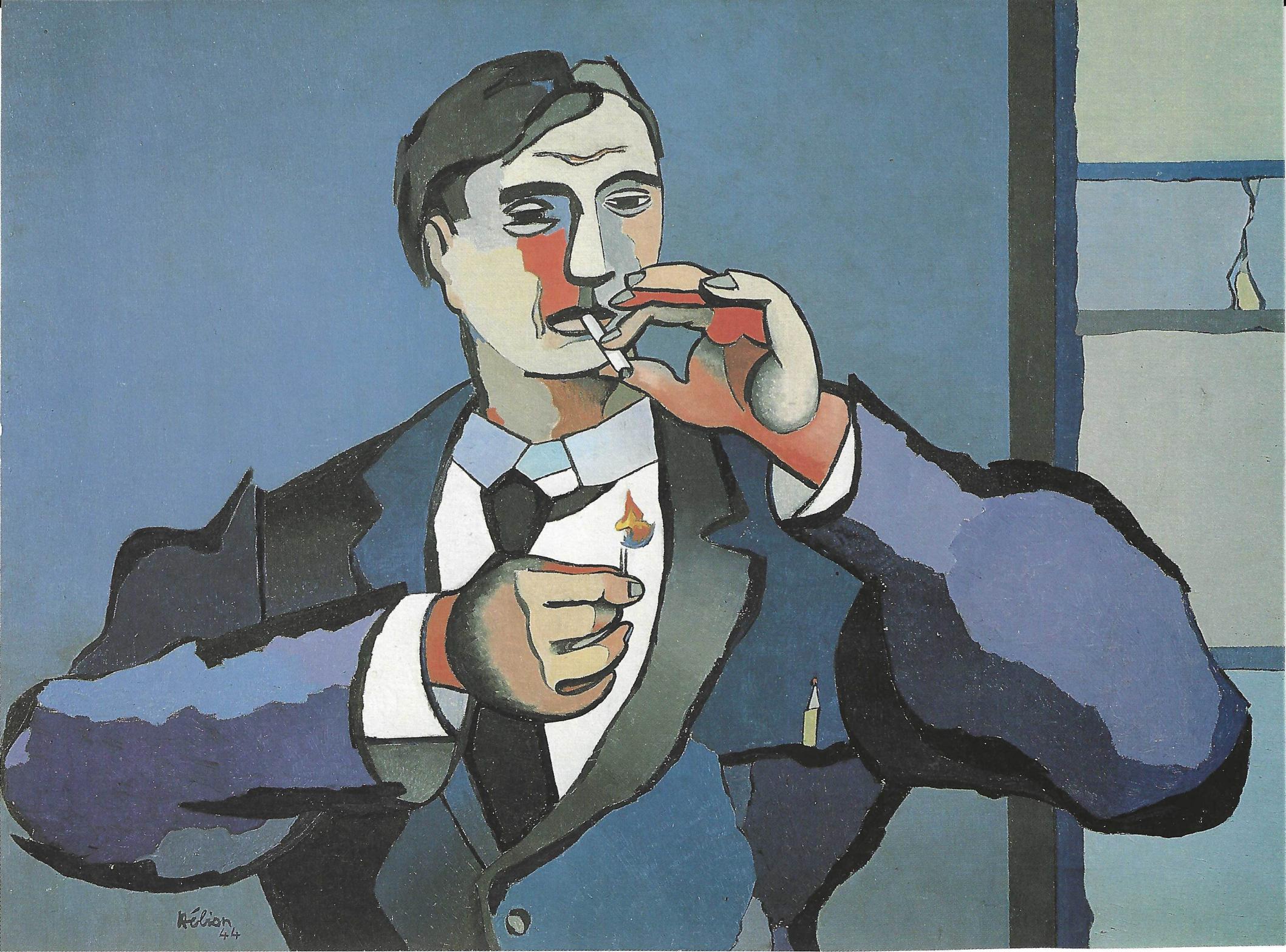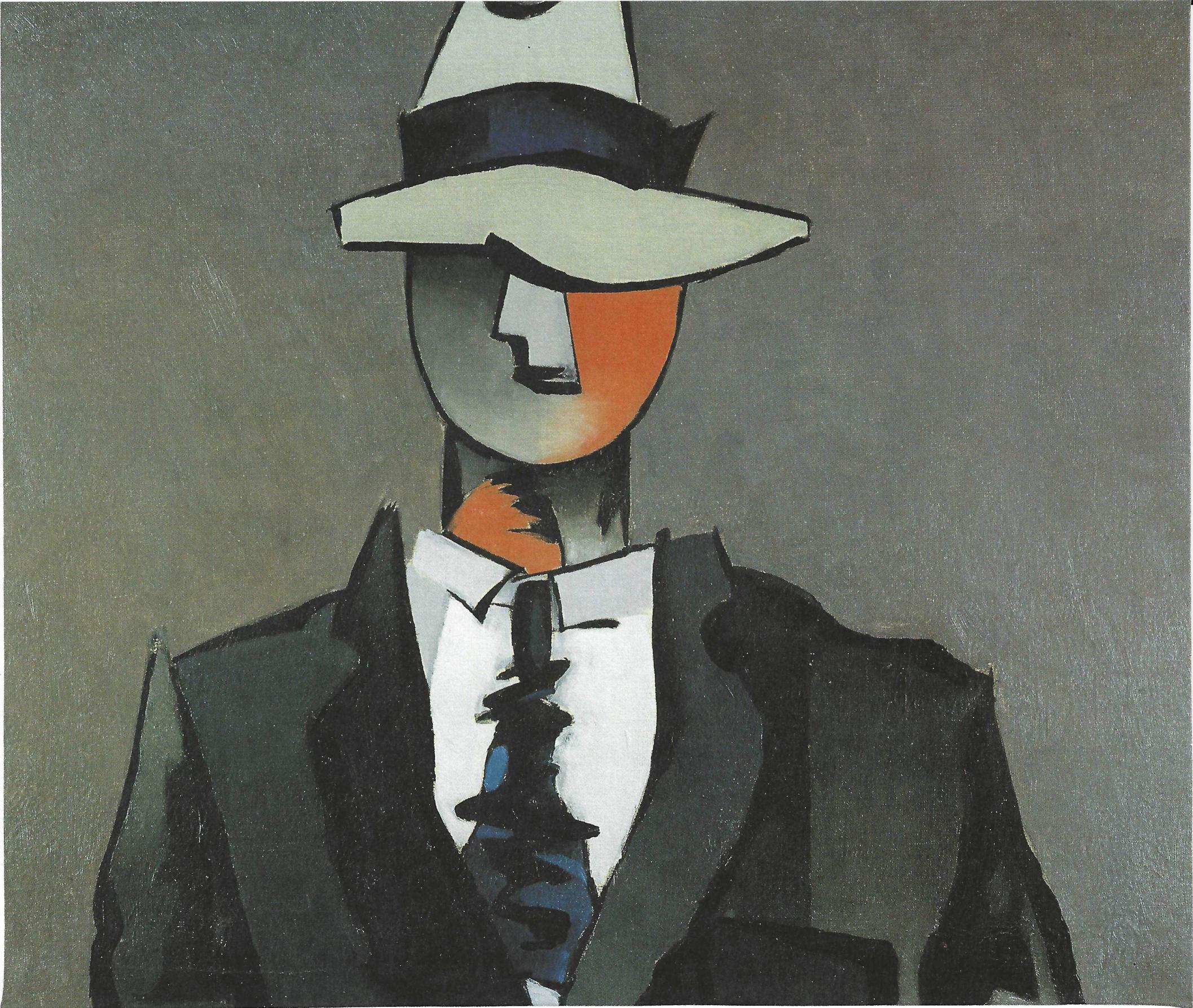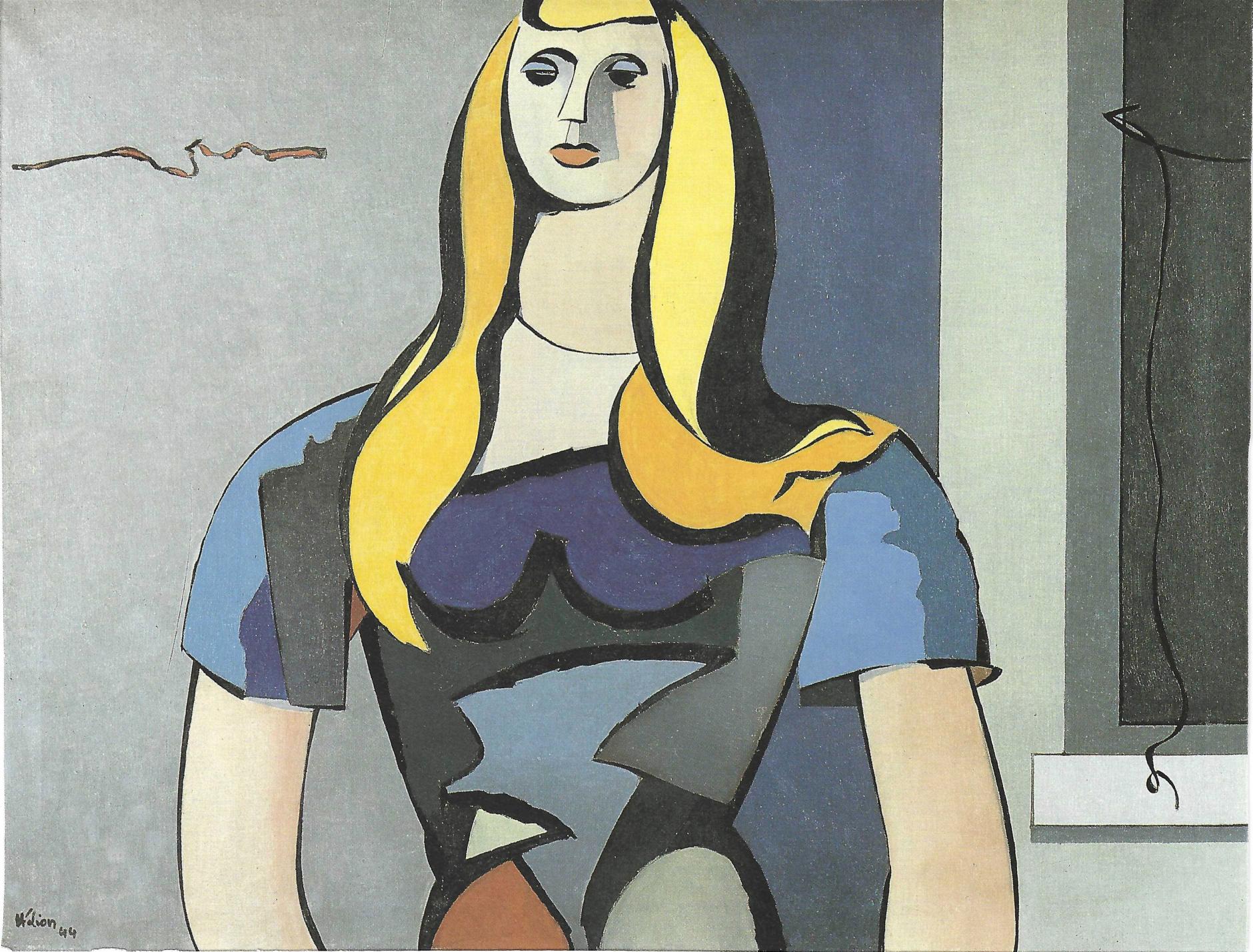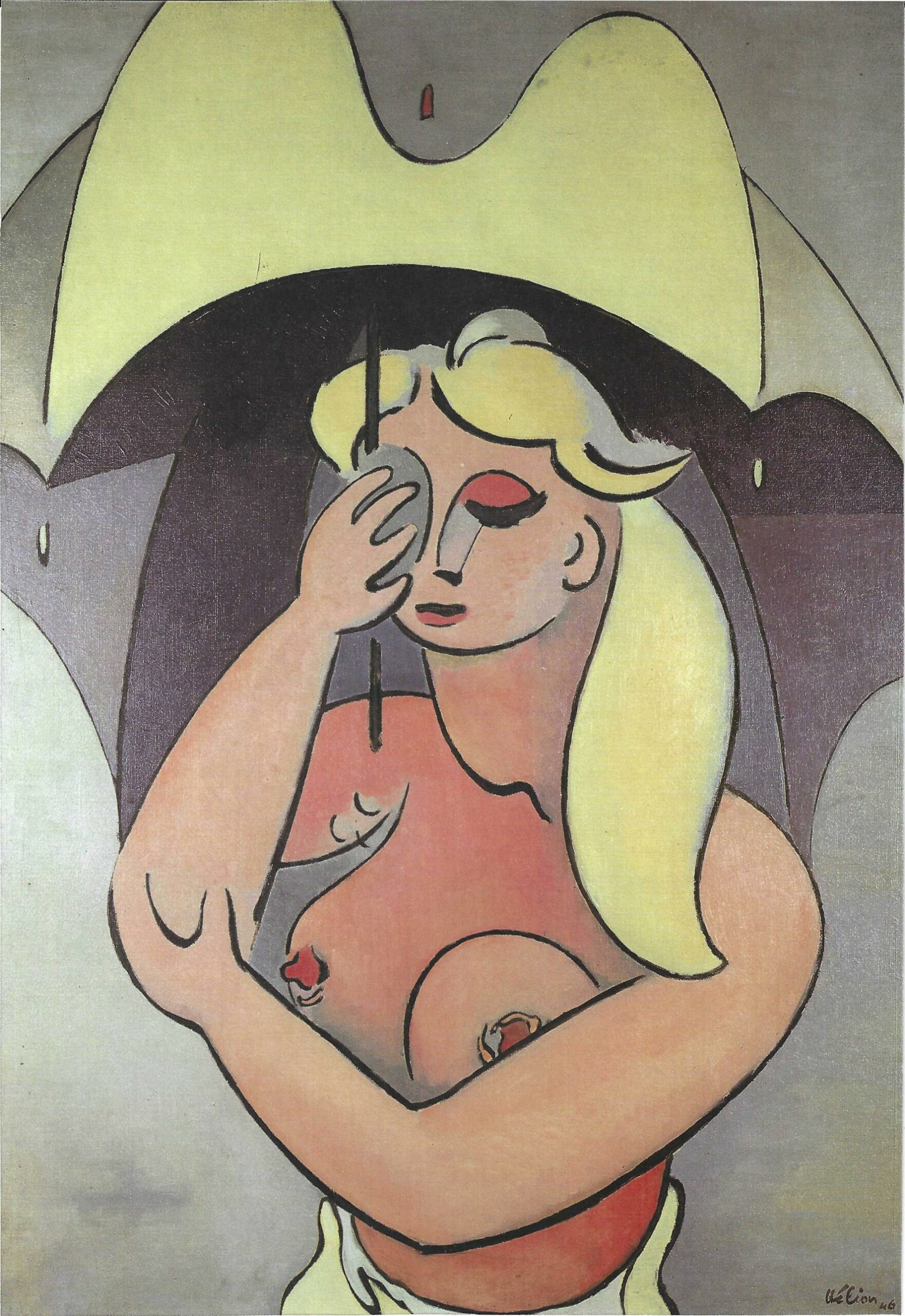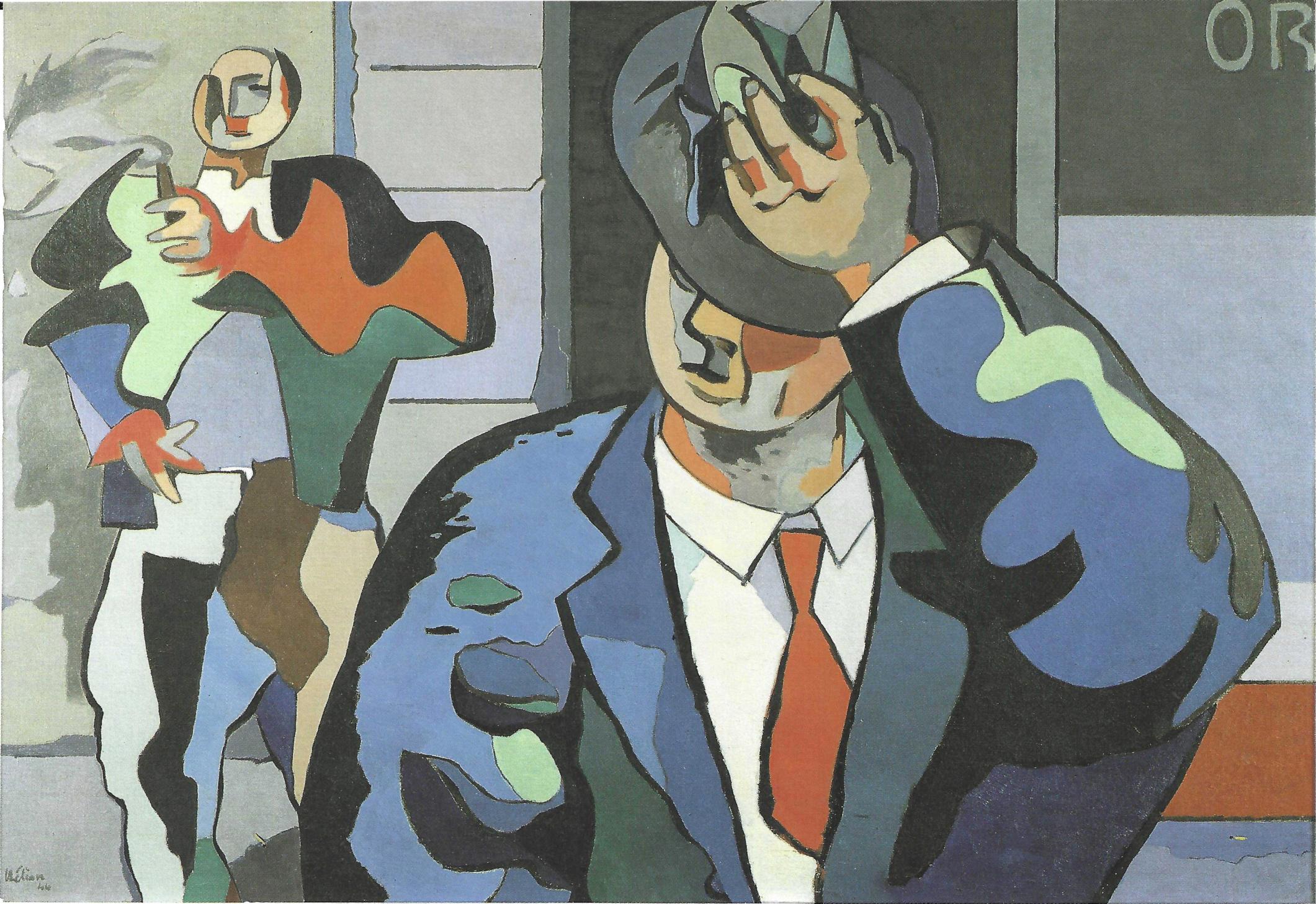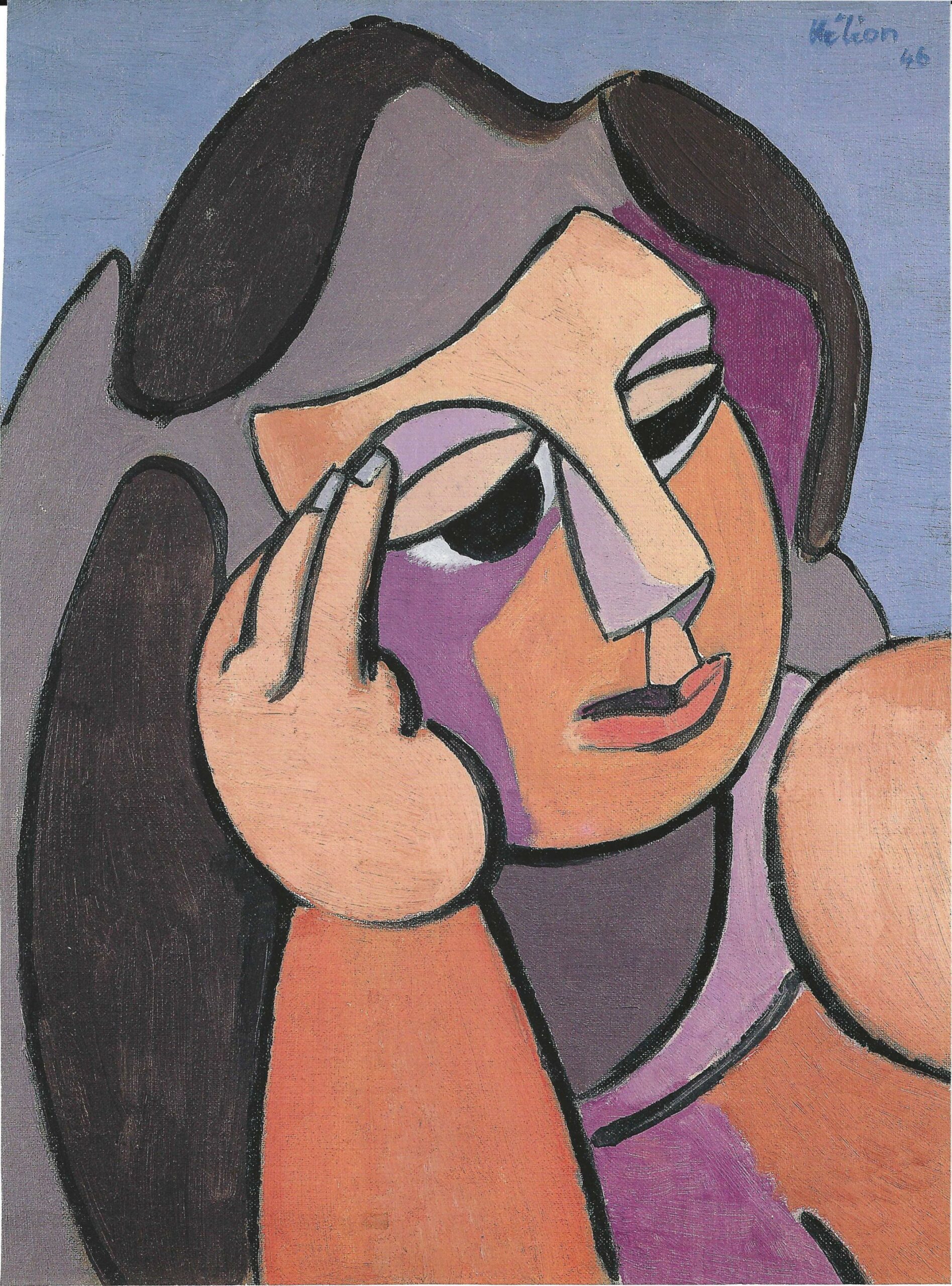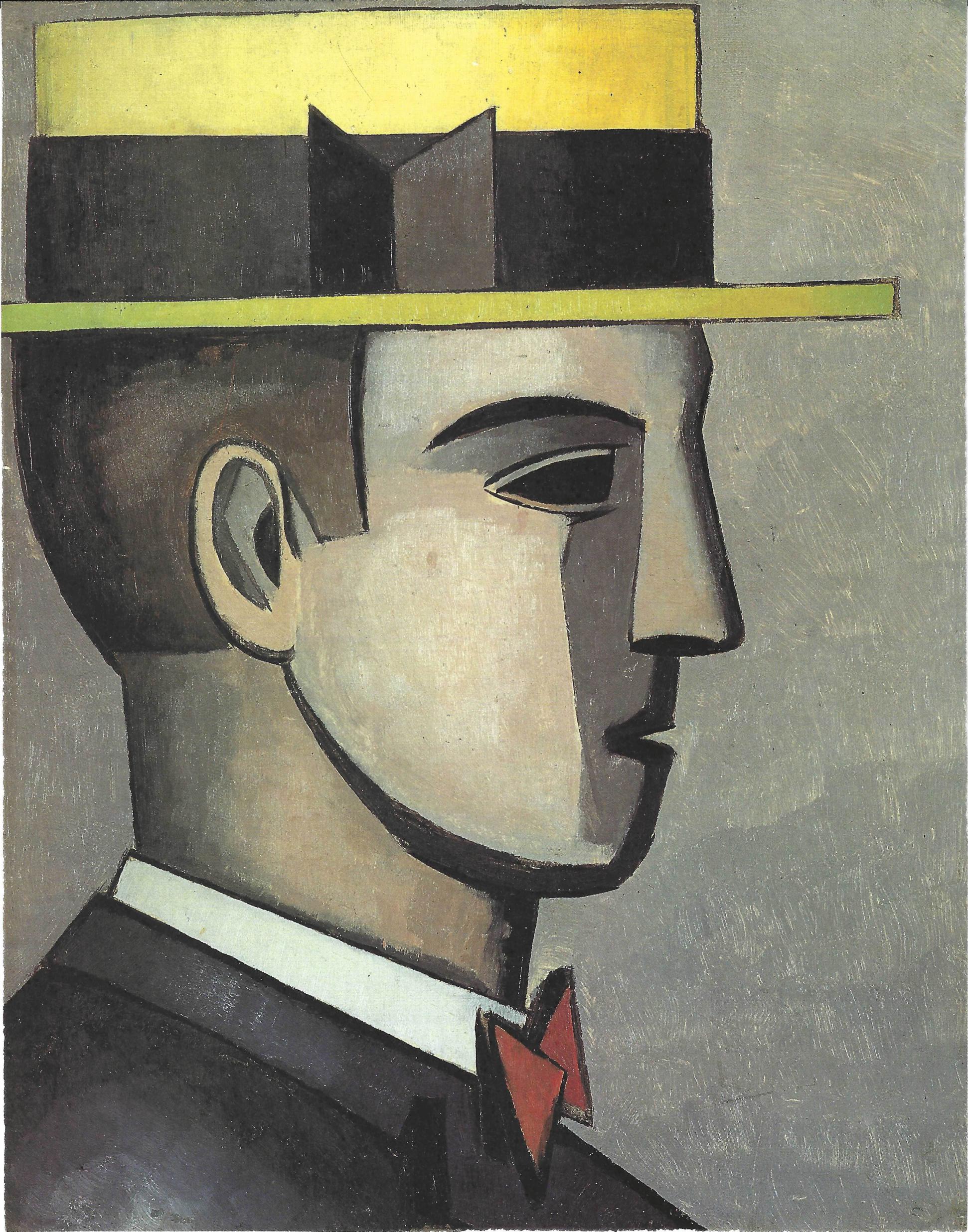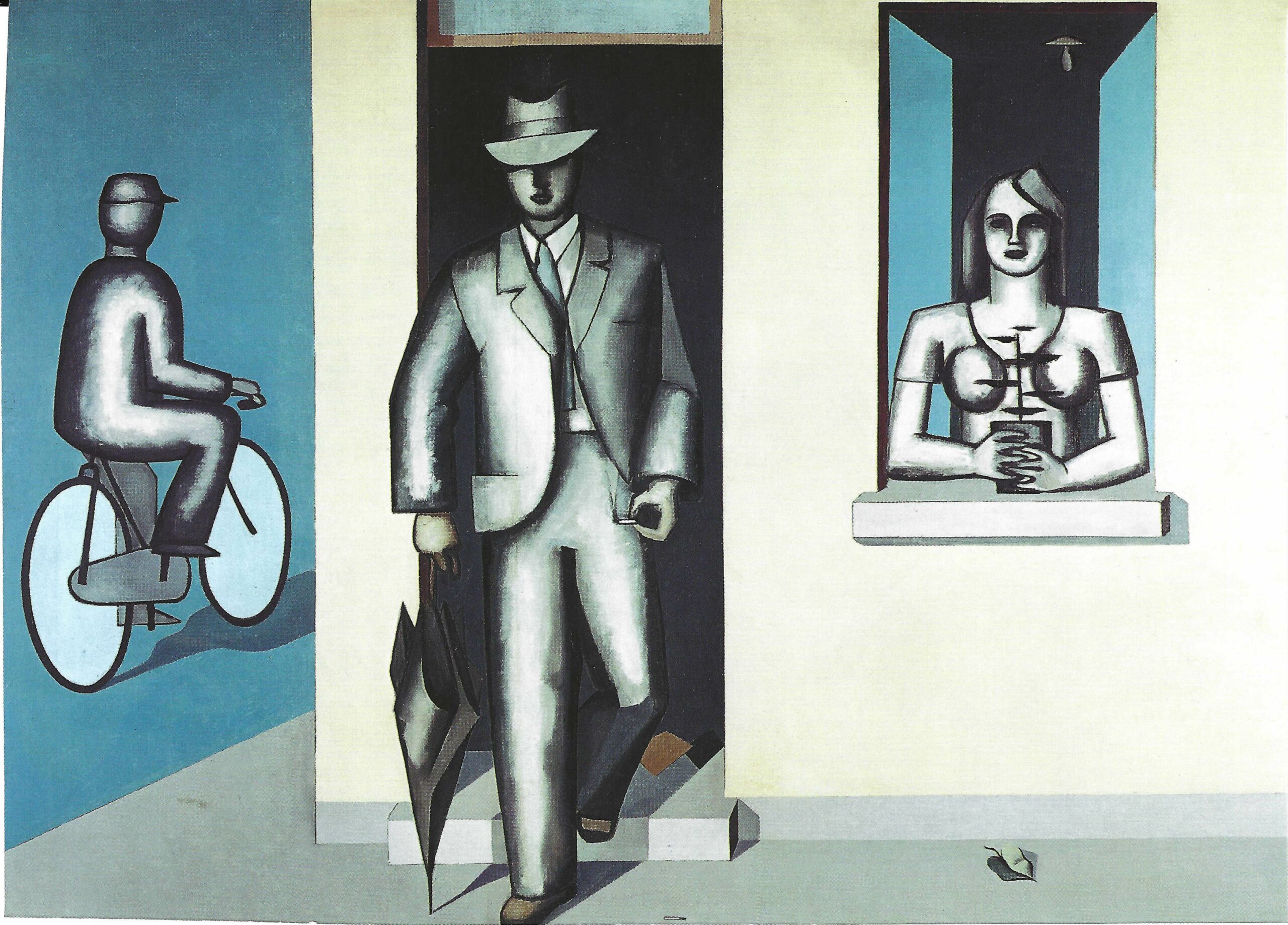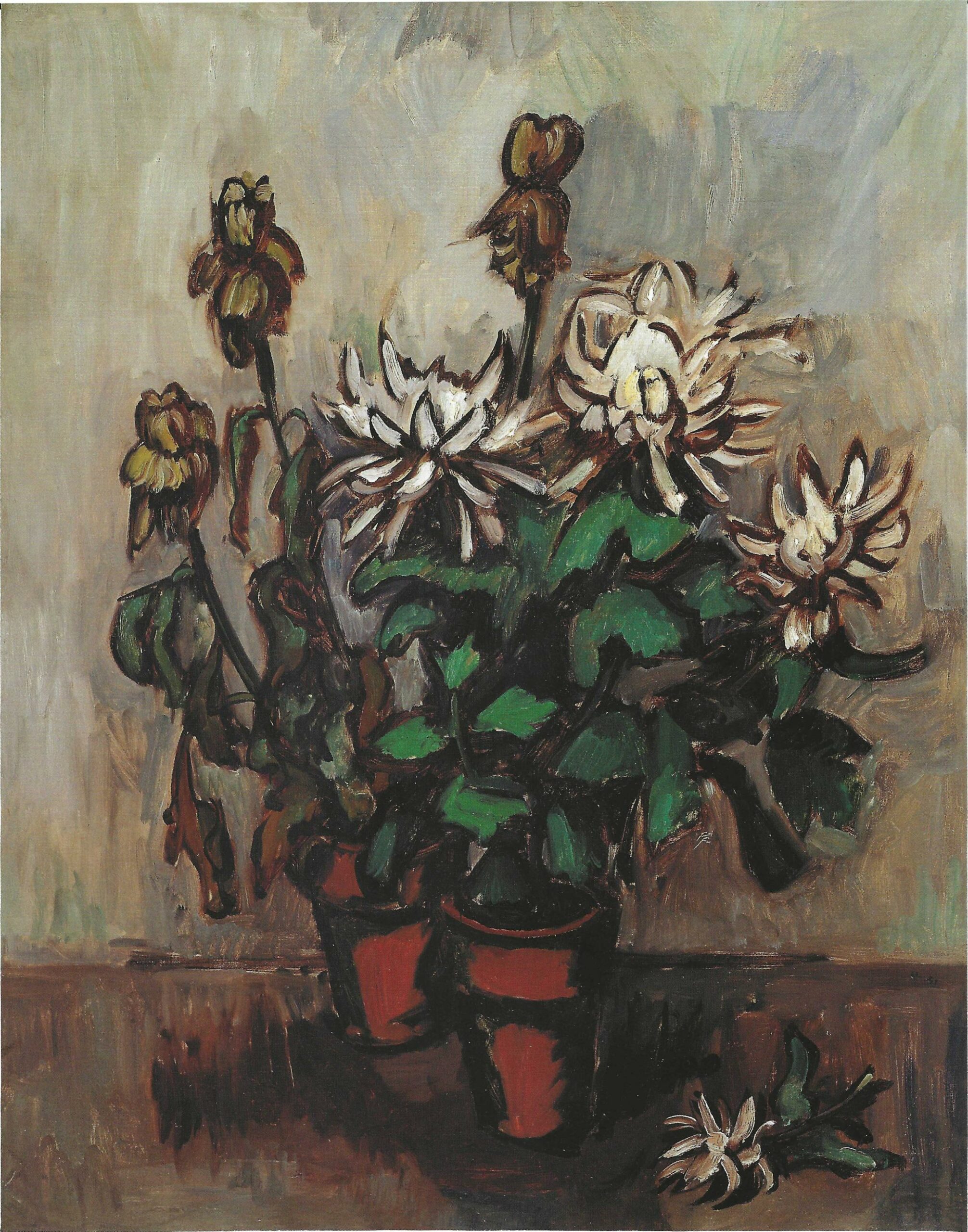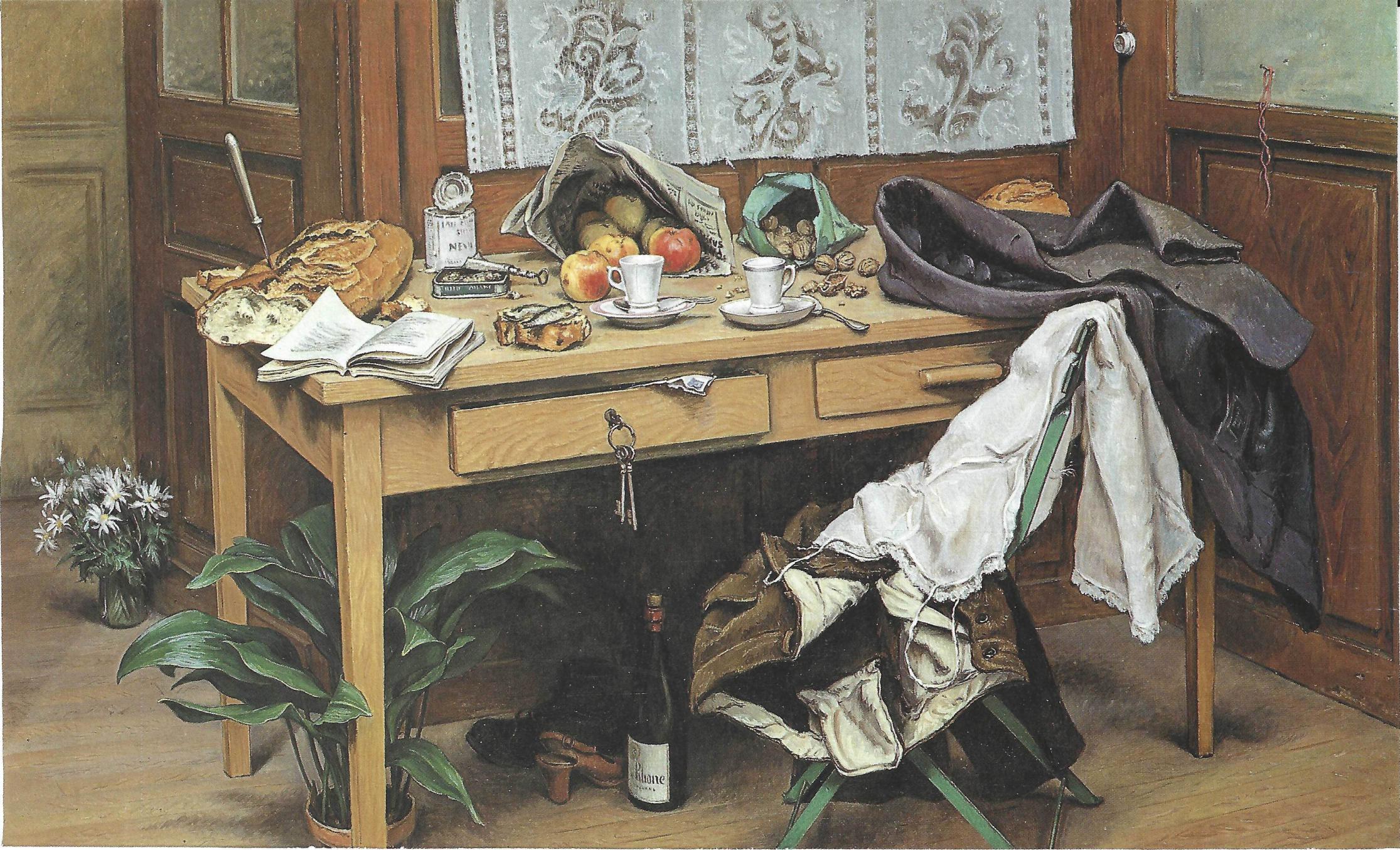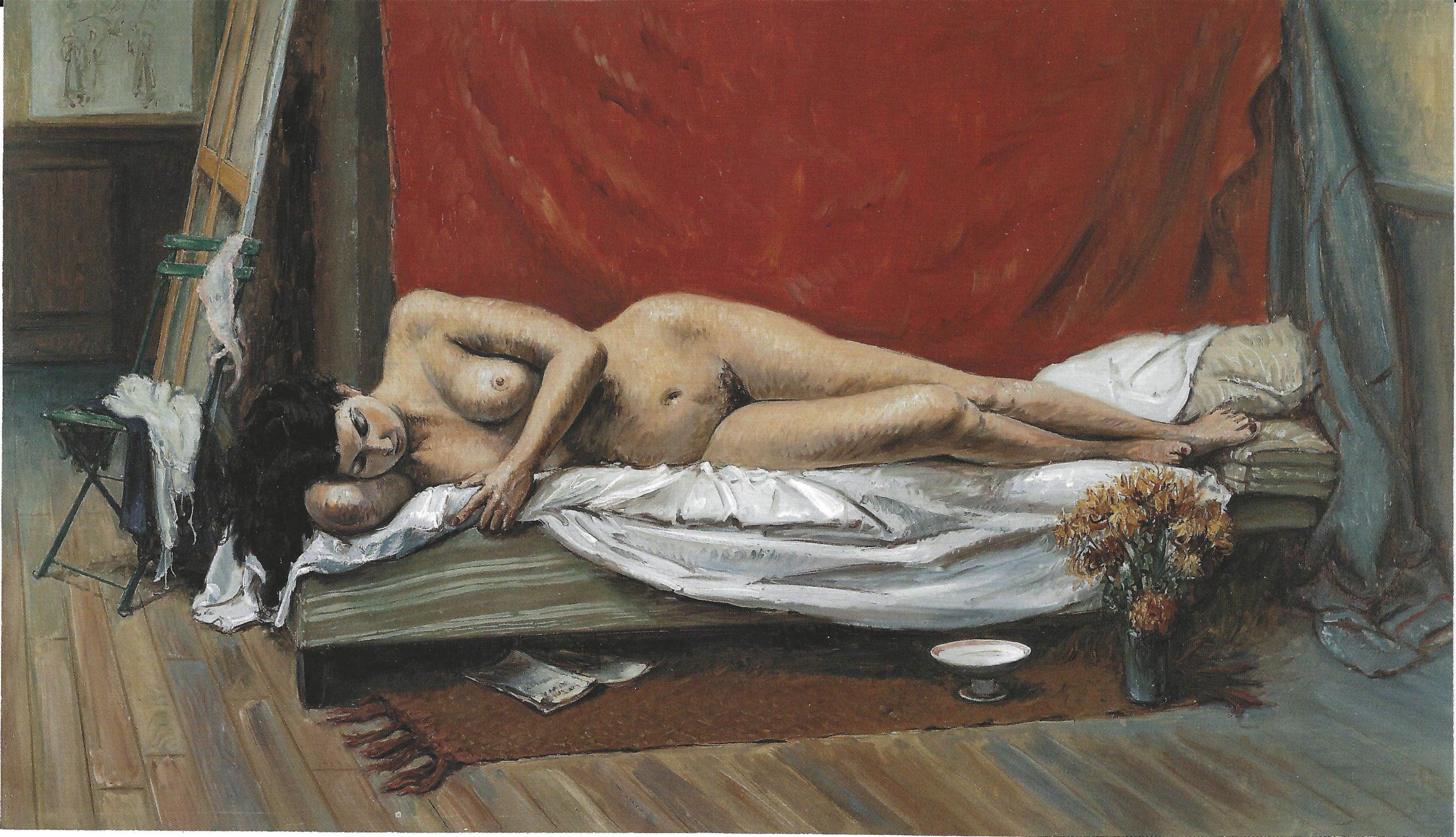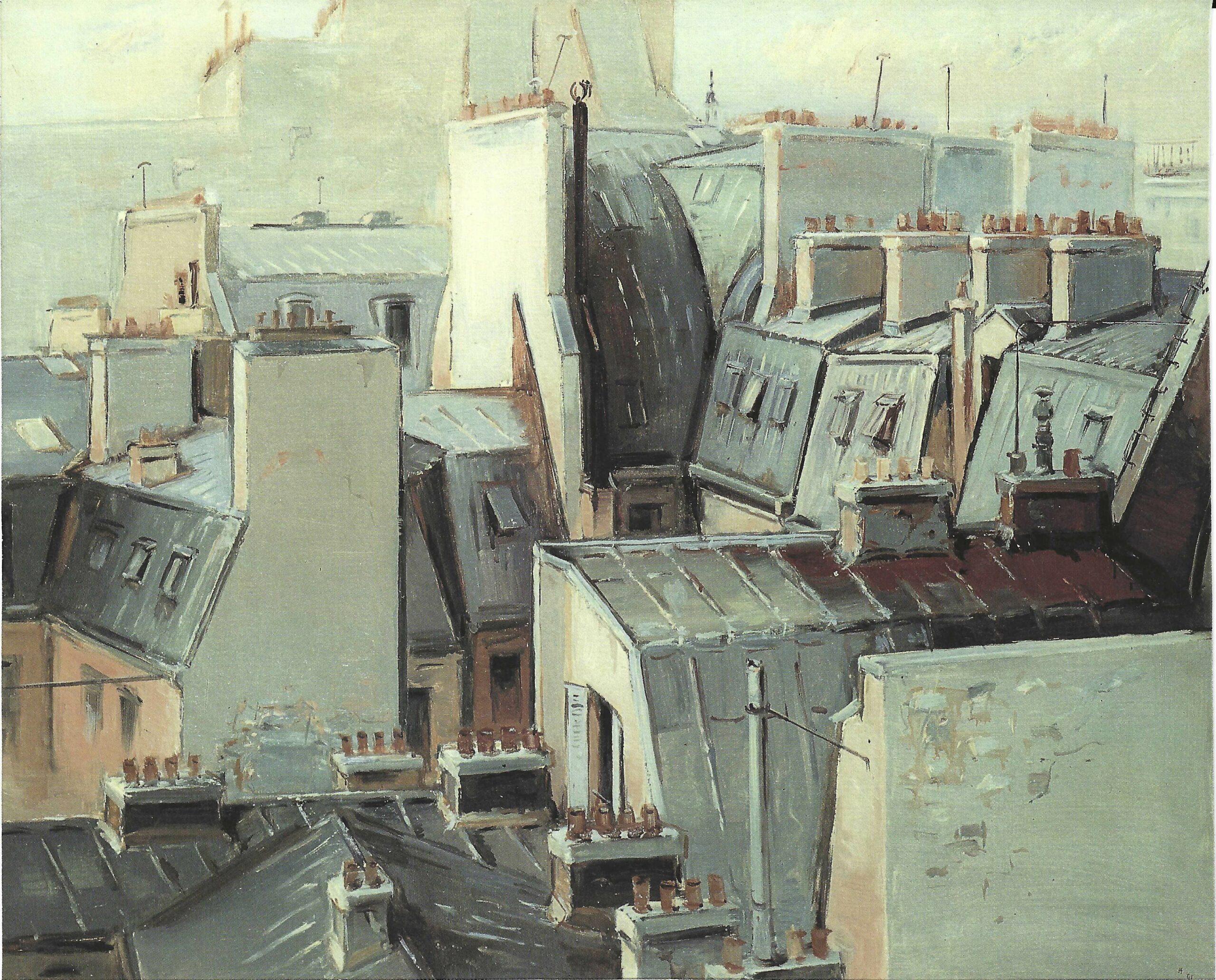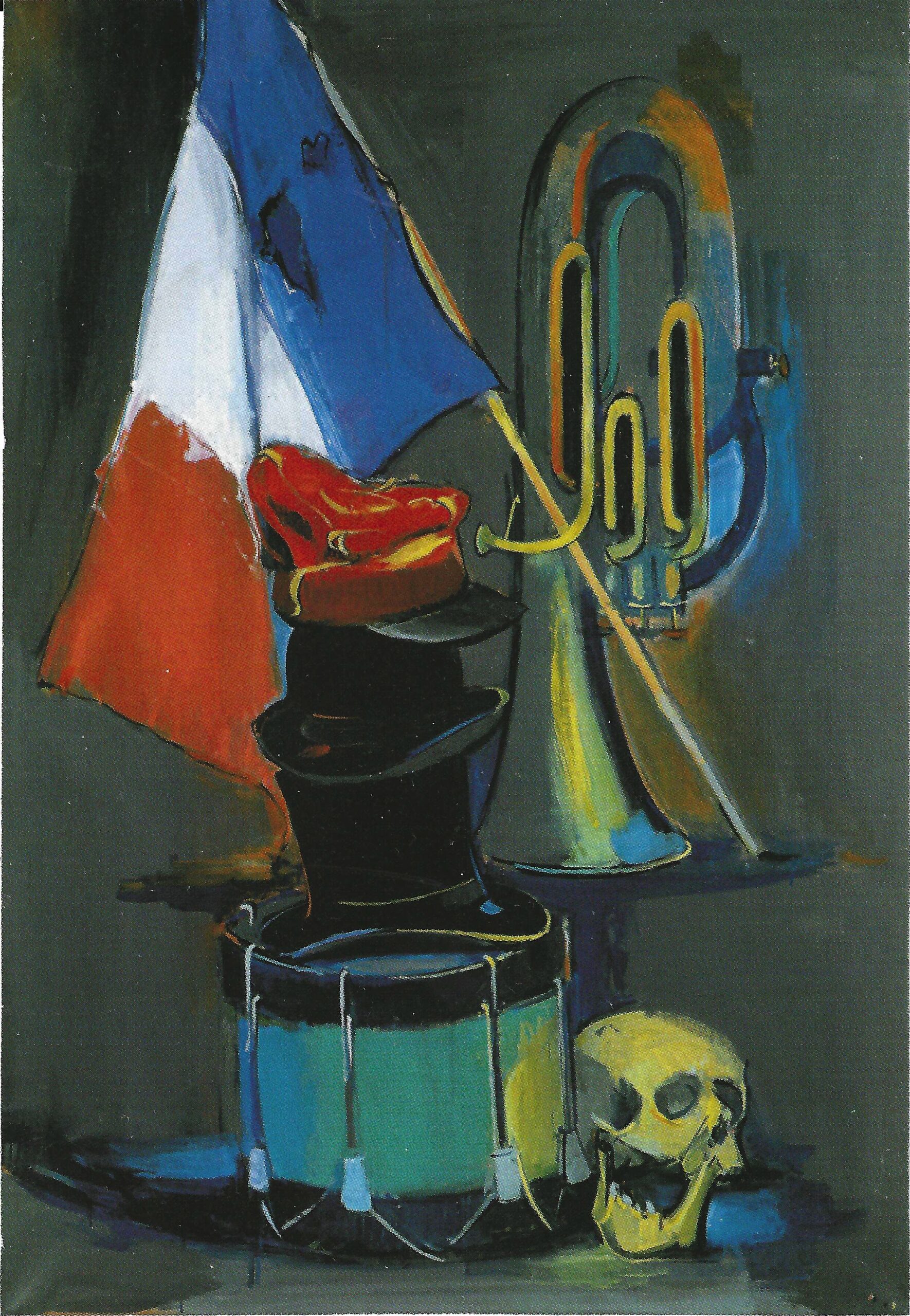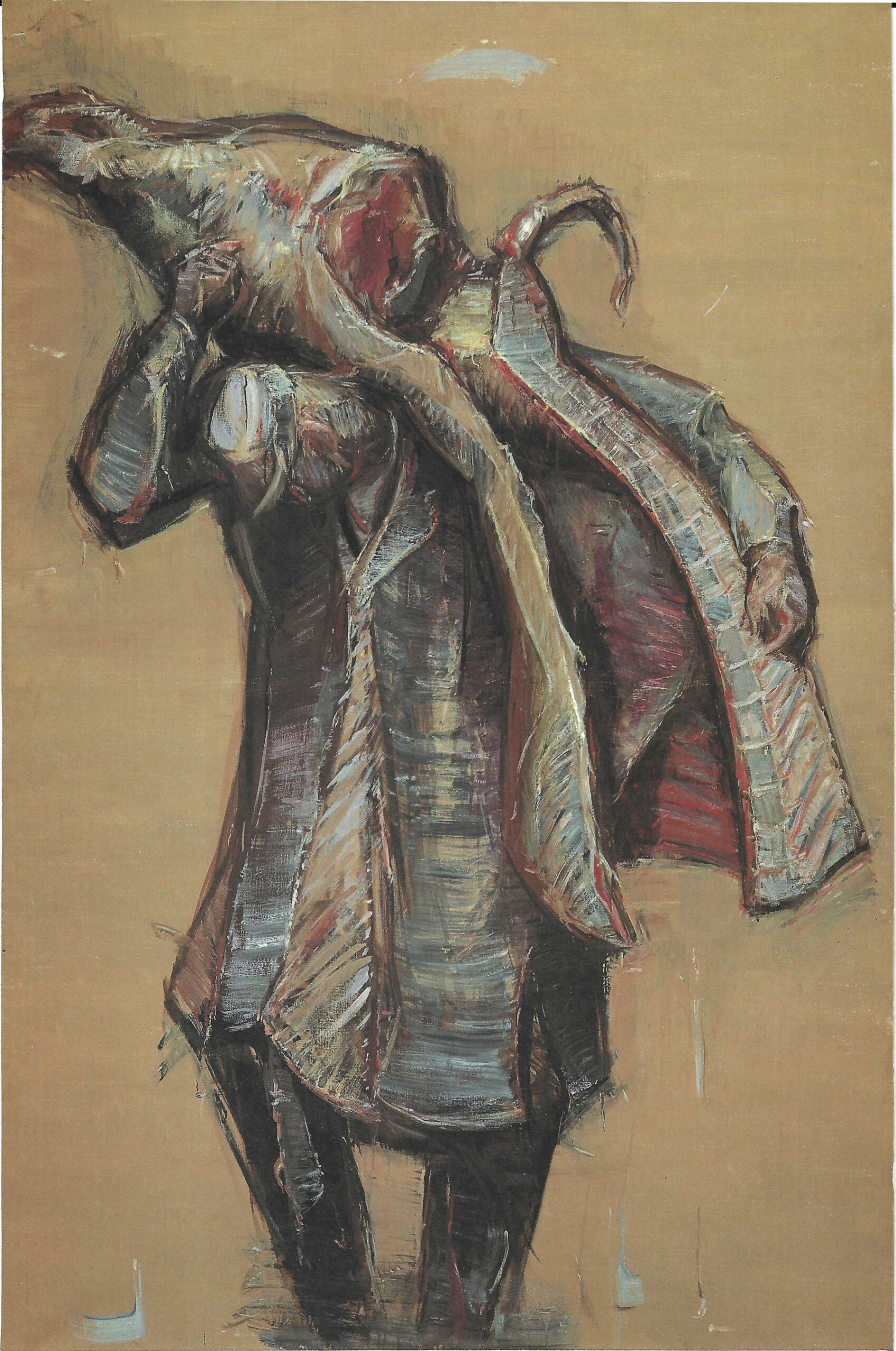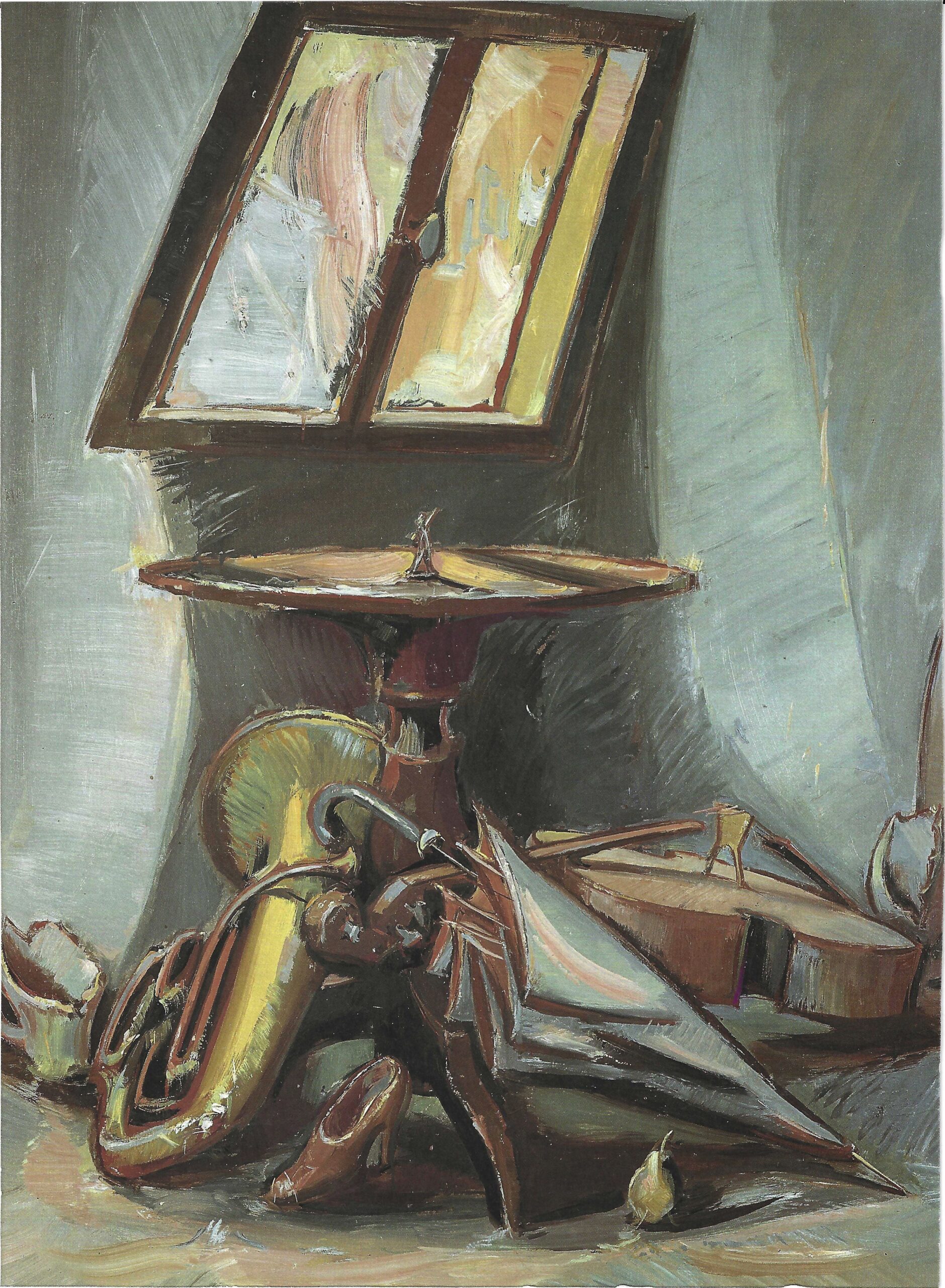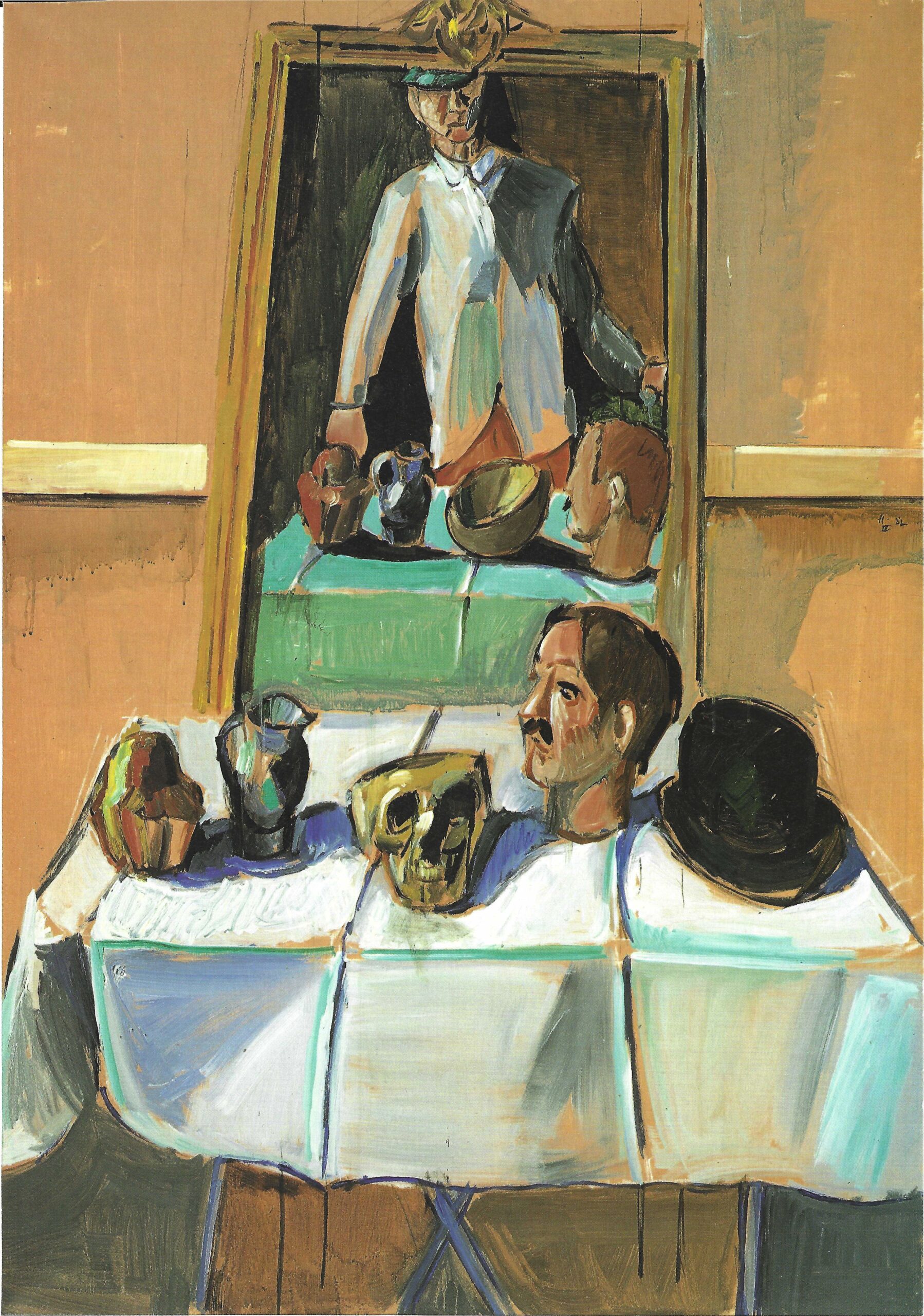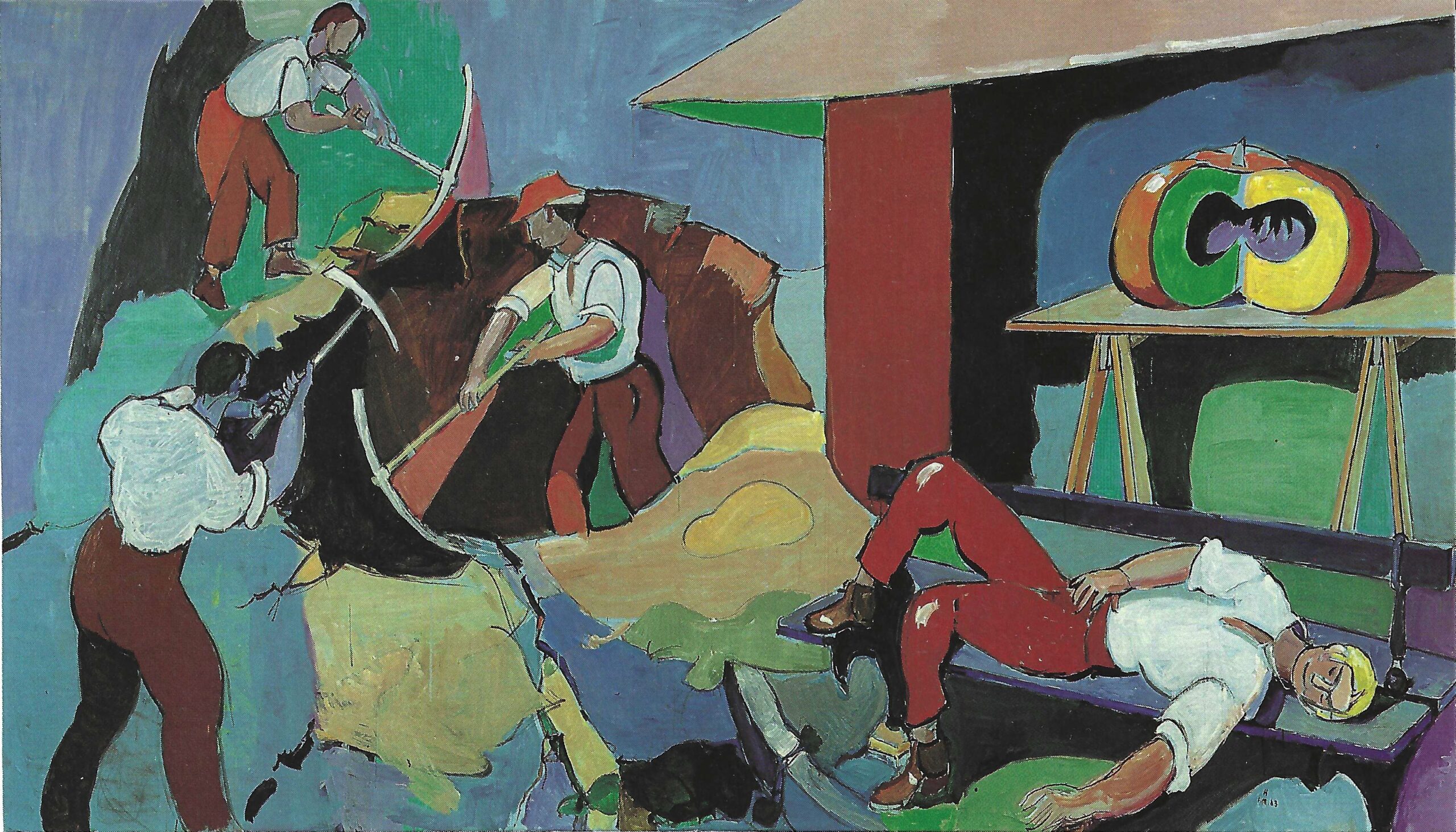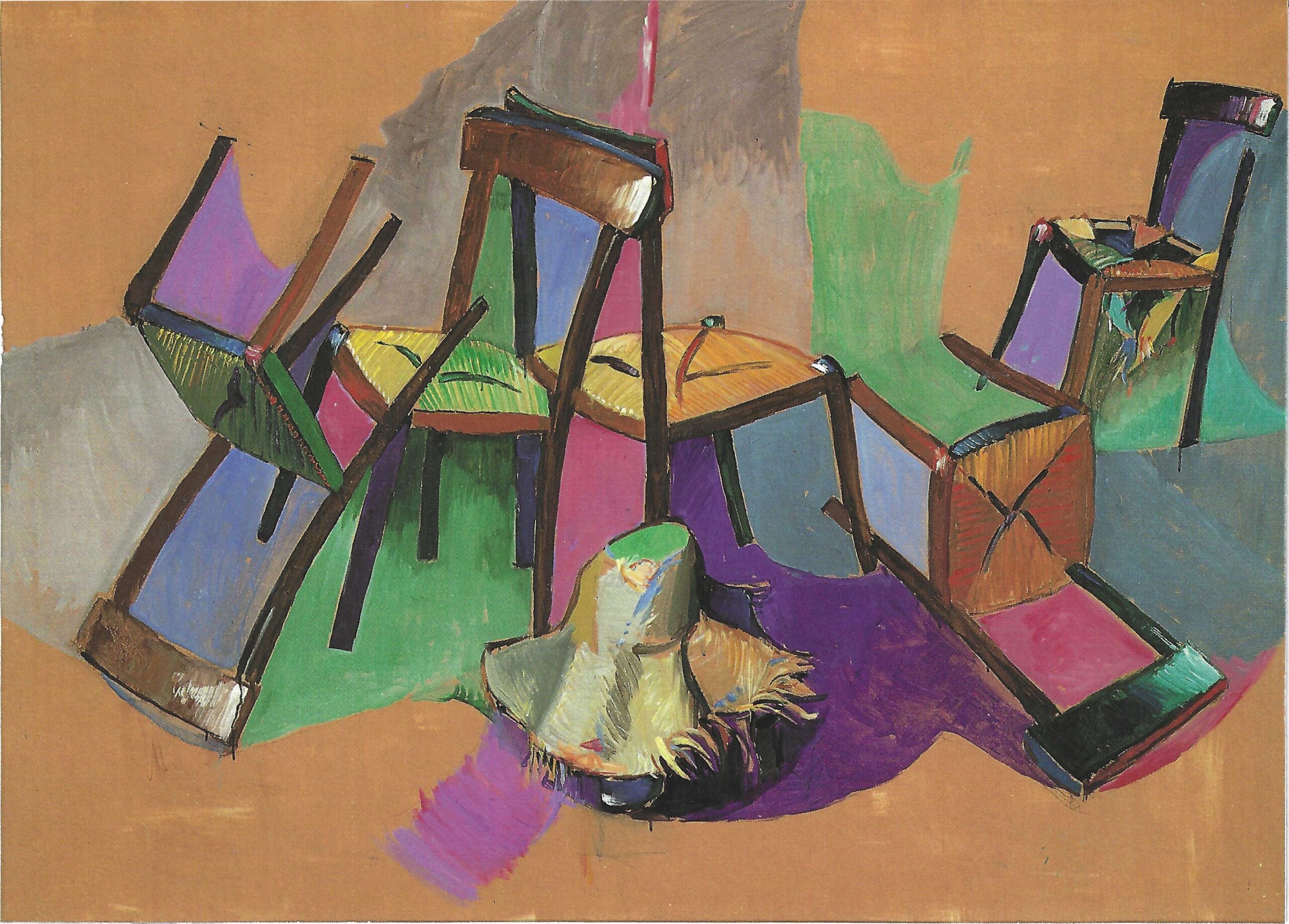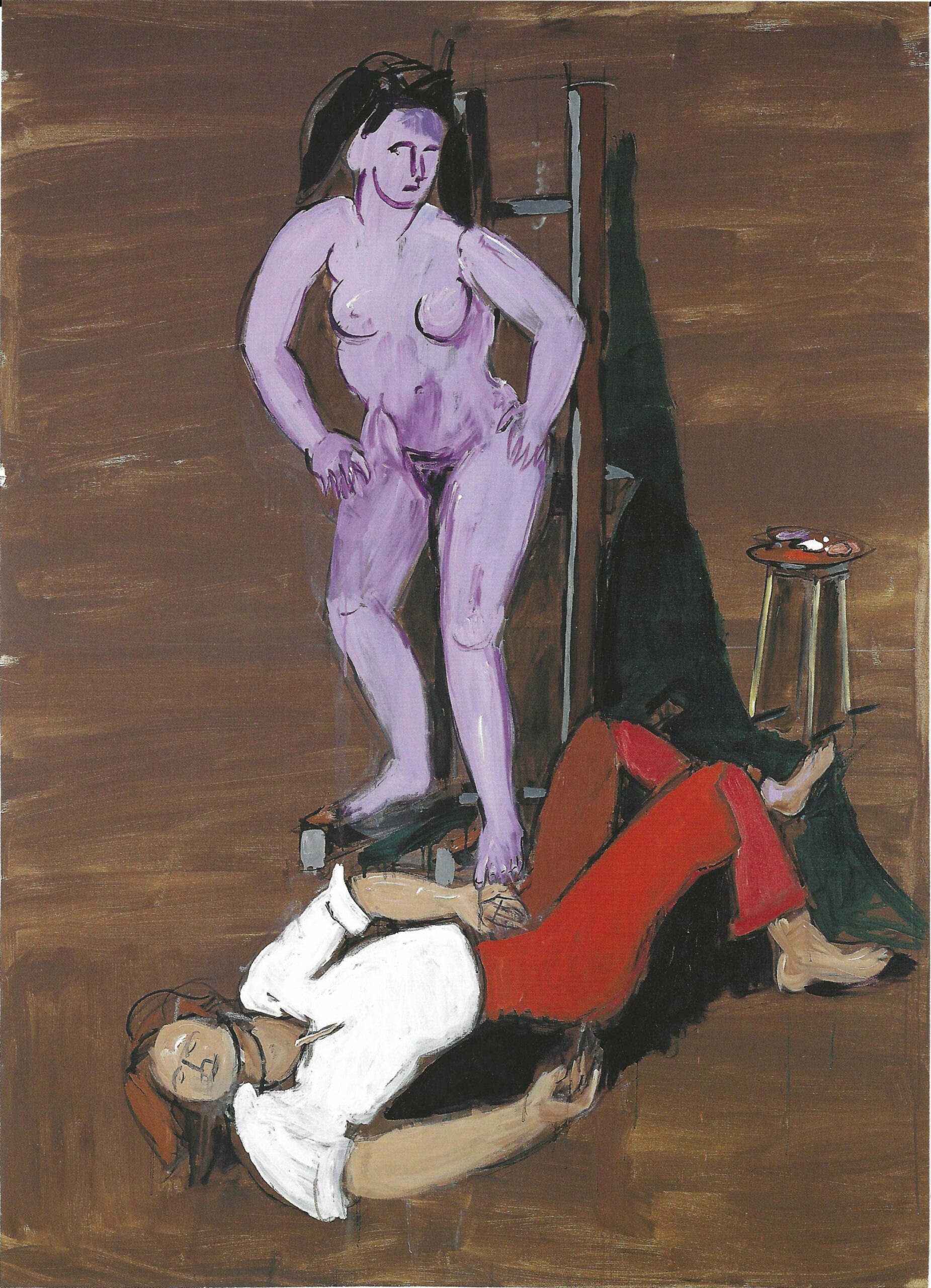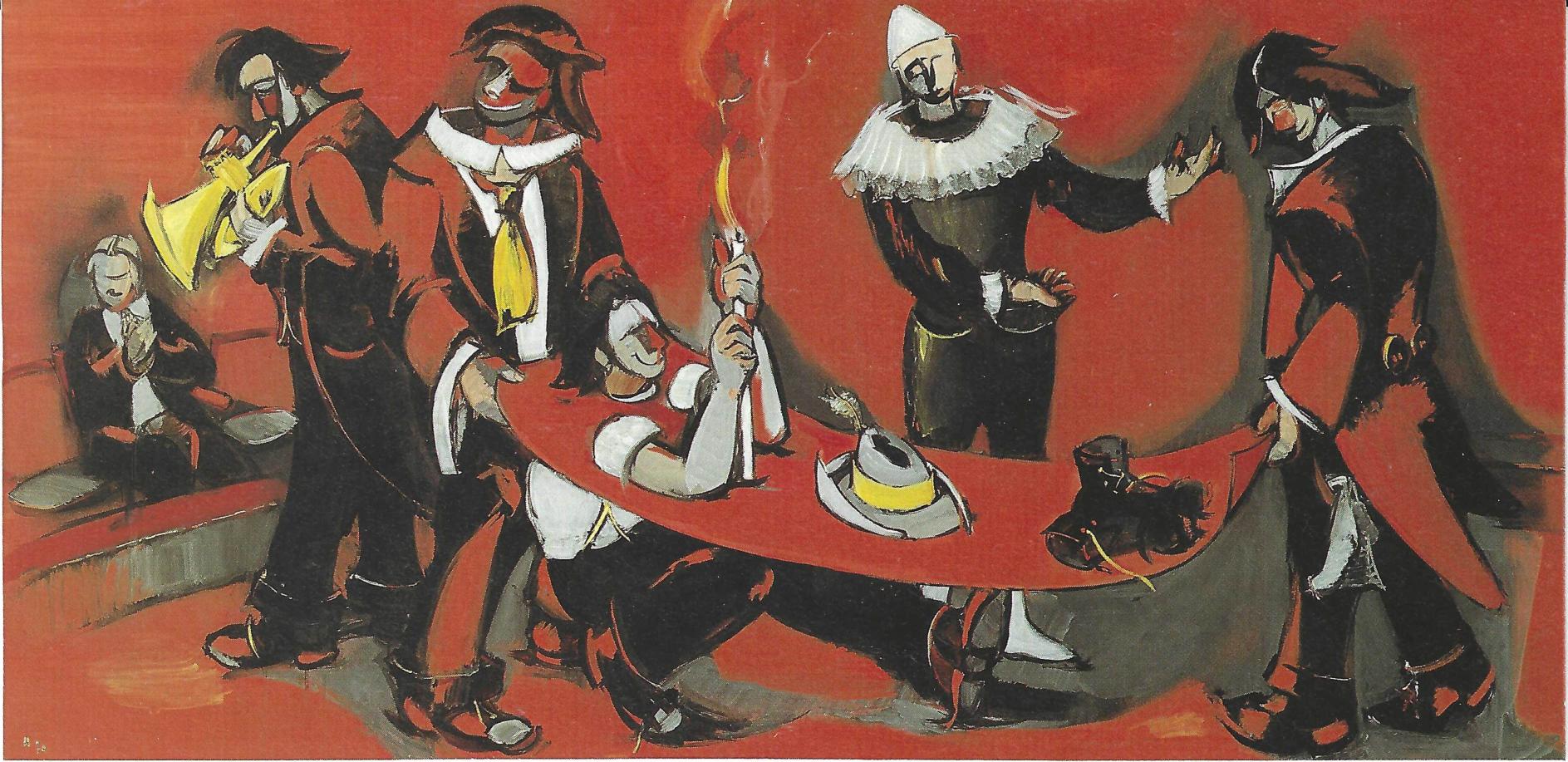The 1920s
He began to paint around 1923. His early years were an initiatory period for Jean Hélion, as he meets people and exhibits at the Foire aux croutes at Montmartre.
He painted everyday objects, table, glass, bowl, bottles, bread.
A certain influence of Soutine’s painting can be seen in some of his works such as Homme assis (1928).
The 1930s
With the Uruguayan painter Torrès-Garcia he discovered cubism and surrealism. He turned to abstract painting in July 1929.
In 1930, the influence of Mondrian led Jean Hélion towards constructivist abstraction (Composition orthogonale).
The Art Concret group founded with Théo Van Doesburg, Tutundjan, Carlsund, manifested a radicalism where the work of art must be entirely conceived and formed by the mind before its execution.
This group became Abstraction-Création around 1932, with Arp, Herbin, Delaunay, Van Doesburg, Kupka, Gleizes, Valmier and Tutundjan.
This was the period of Equilibres, Figures, Compositions, Ile de France (1935).
Figure tombée (1939) closes the abstract period.
The 1940s
The end of the 1930s saw Jean Hélion gradually move away from abstraction with Figure tombée 1939, and his first large figurative painting Au cycliste 1939.
On his return from captivity in 1943, men with hats appeared, including Défense d’, street scenes, seated men, L’escalier and La Belle Estrusque. A rebours and Les Trois nus are two major works from this period, of which Jean Hélion wrote in the “Journal d’un peintre” (February 5th 1947) that they seemed to him to be “the most complete and brilliant paintings I have done. I would like to be judged on that”. In 1948, thirty or so nudes followed, then the six mannequins.
The 1950s
At the end of 1951, a new period with about thirty “chrysanthemums”, geraniums, arums and chestnut leaves. He painted from nature and pursued reality as closely as possible, as it can be seen in L’atelier, Le Goûter and Odalisque à l’atelier. At Belle-Ile, there is no shortage of other motifs on reality, Le Grand Brabant, Port-Coton, Paysage.
The 1970s
This last period of Jean Hélion’s life is like a modern allegory of the painter’s universe.
He writes: “I draw with my knowledge, I colour with my passion, I compose with the dream” (Notebooks, March 1st 1974).
He takes up his previous objects and themes in a reverse staging like the end of the Hélion cycle. La Ville est un songe, Relevé de la figure tombée and Jugement dernier des choses illustrate this outcome of the artist’s work.

